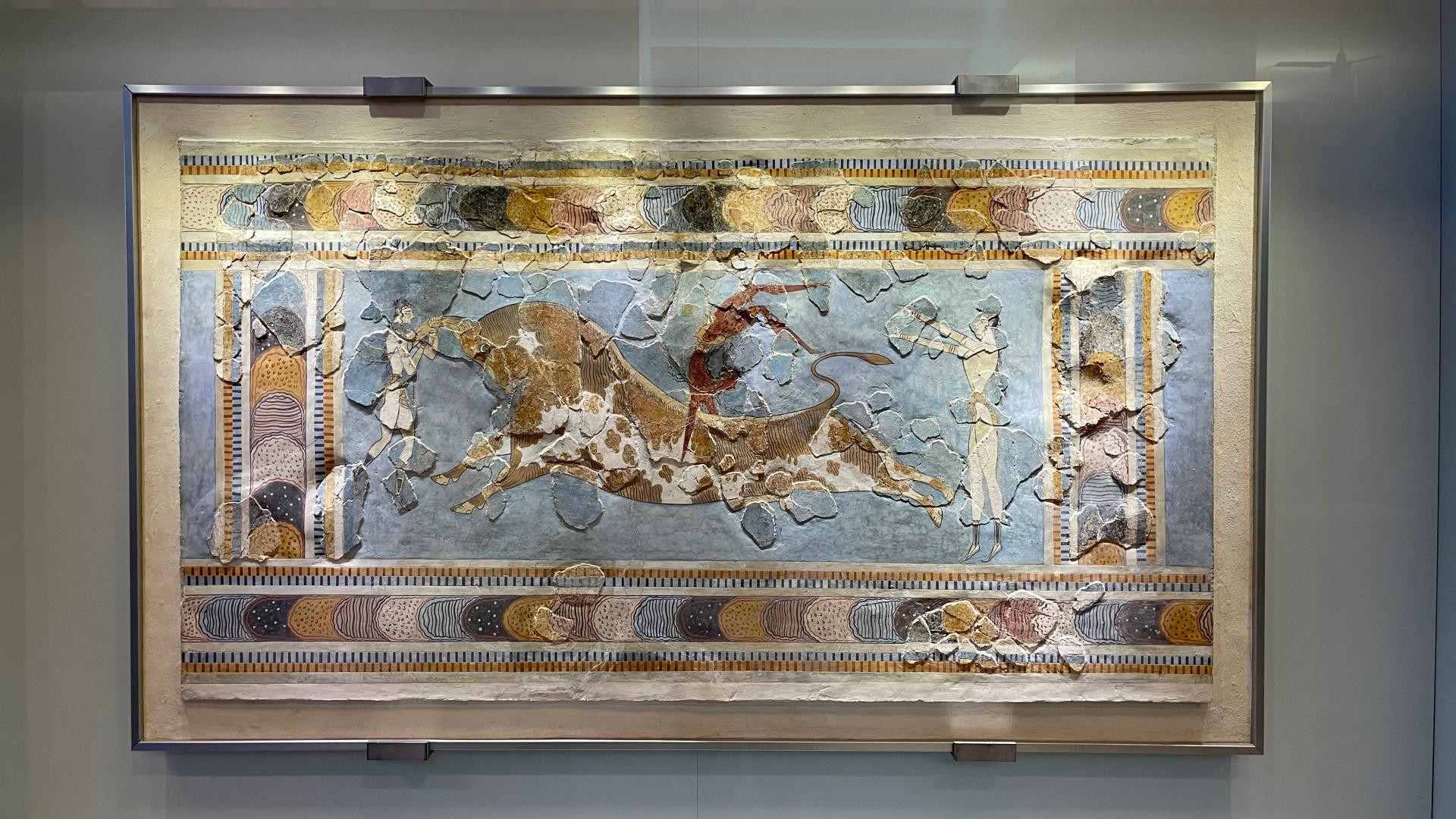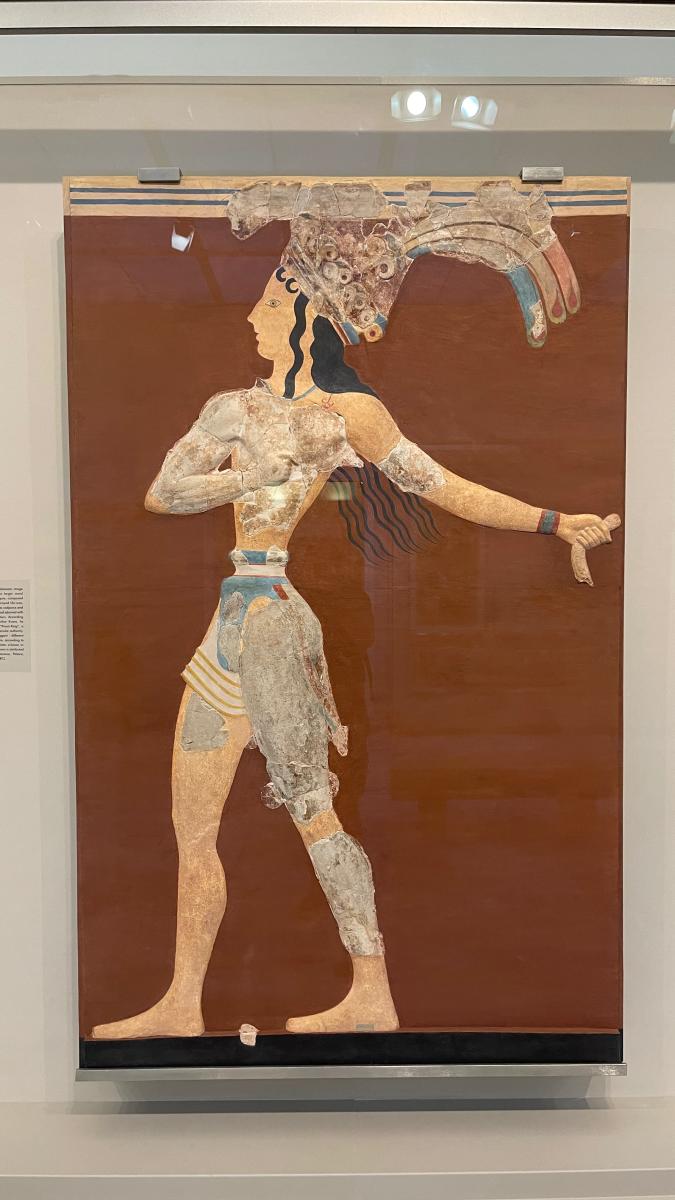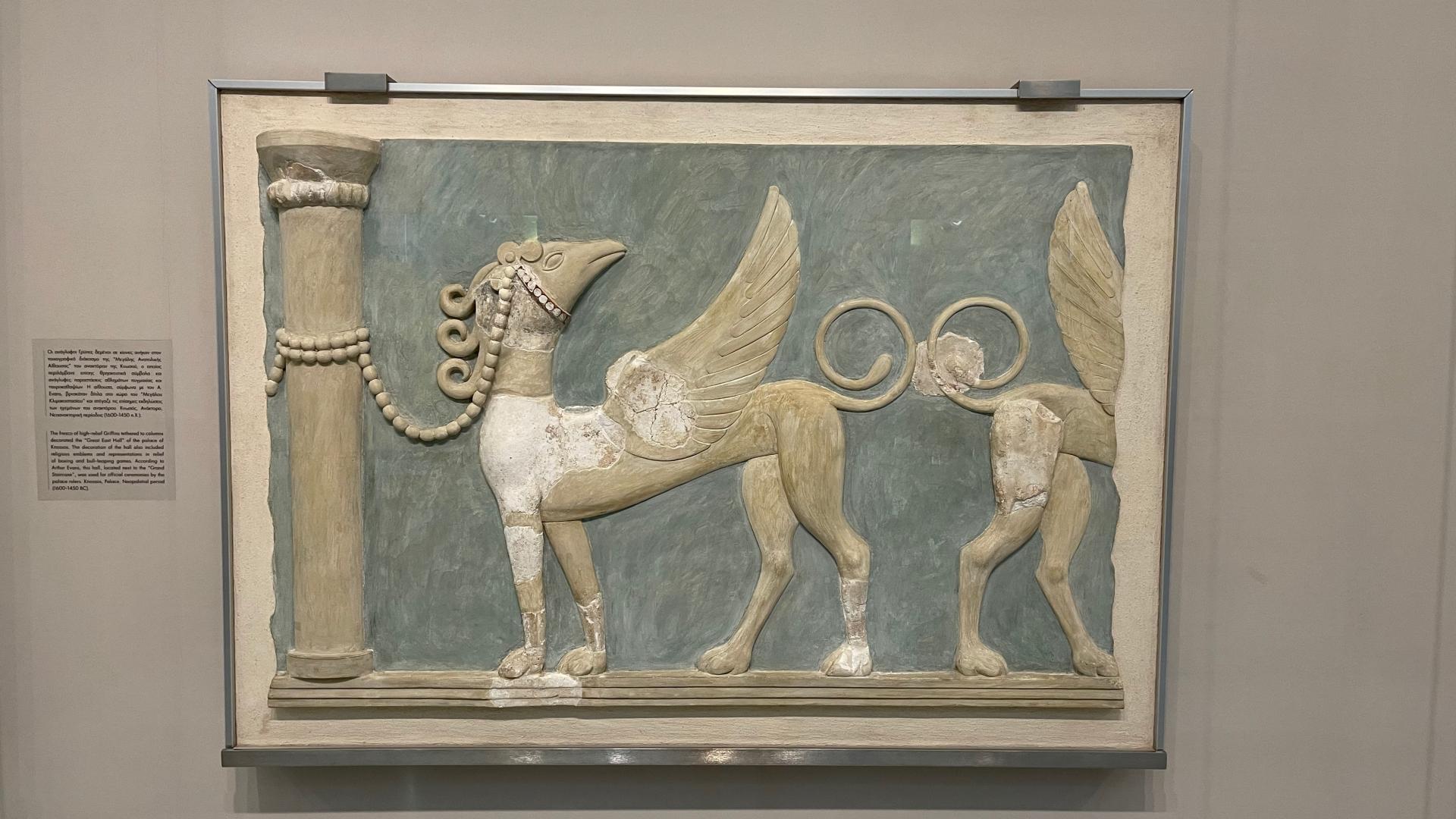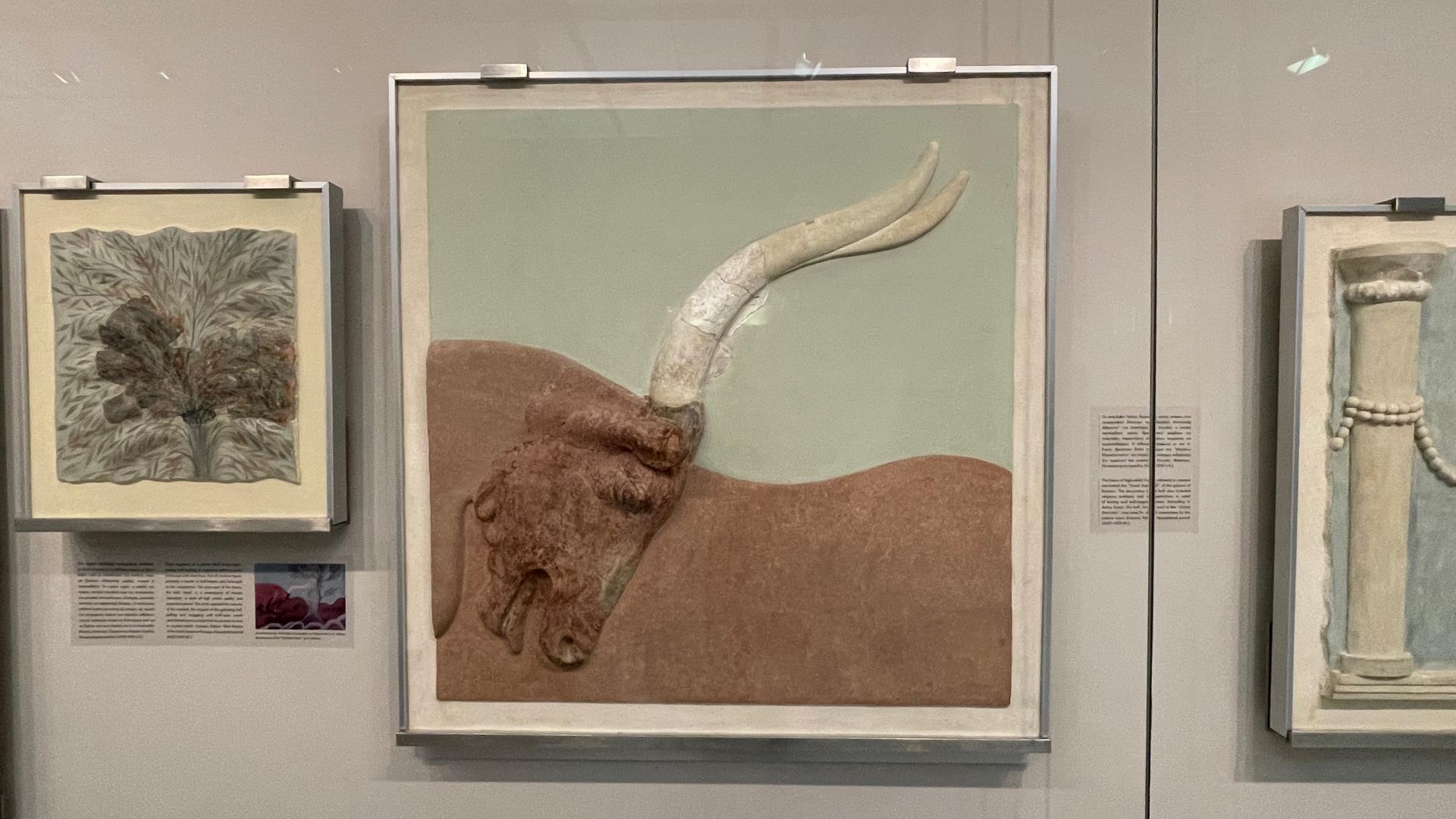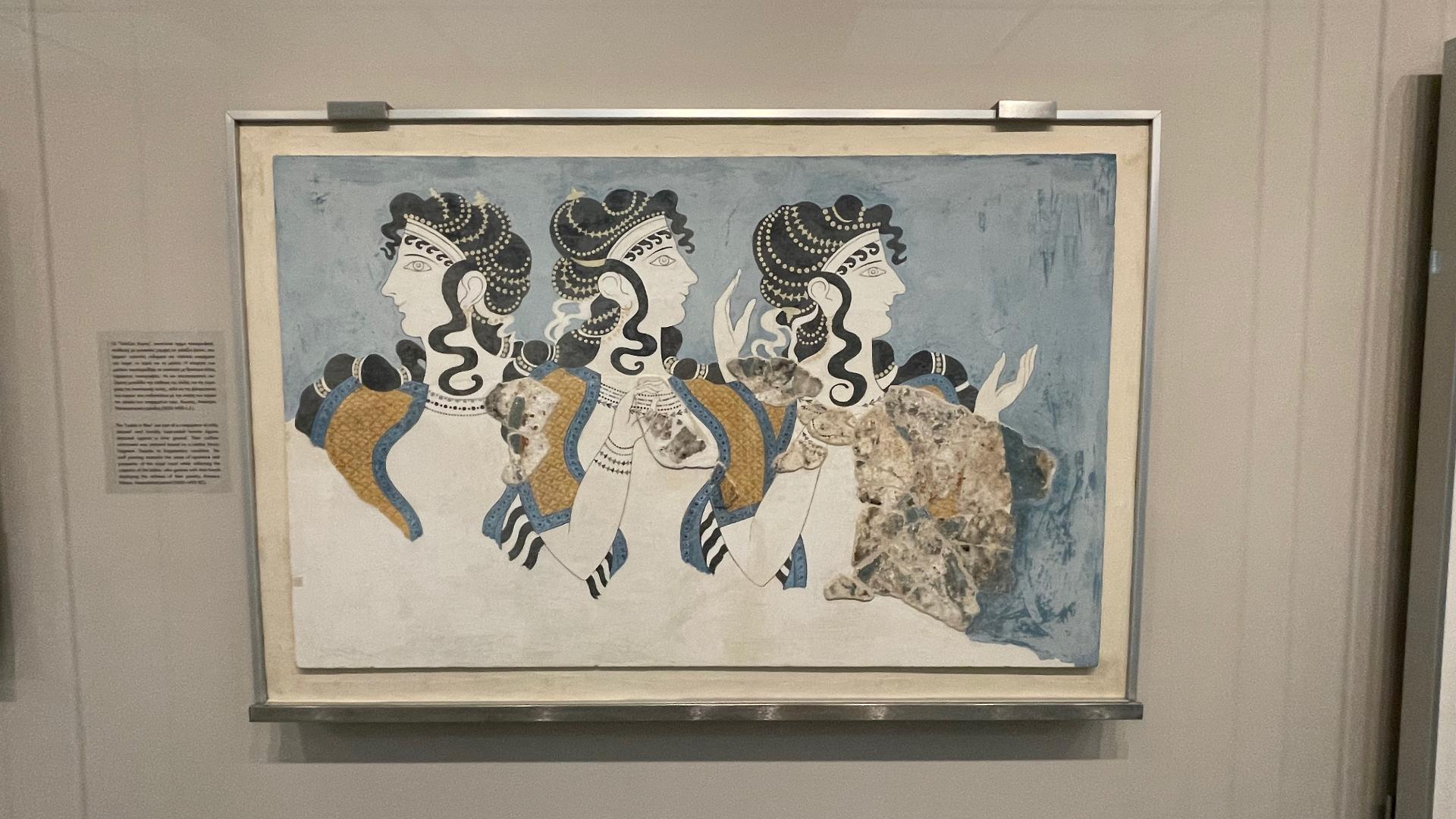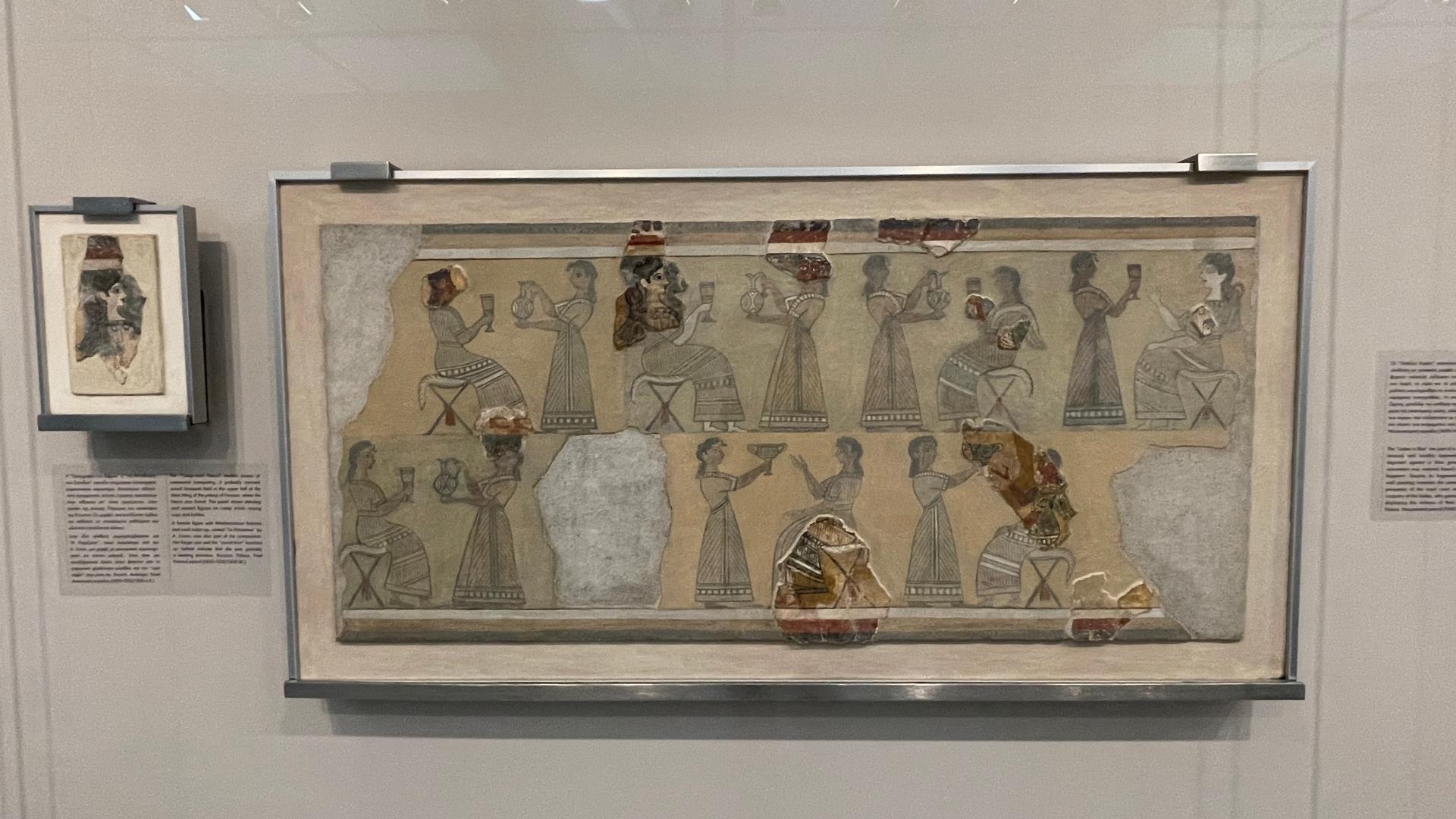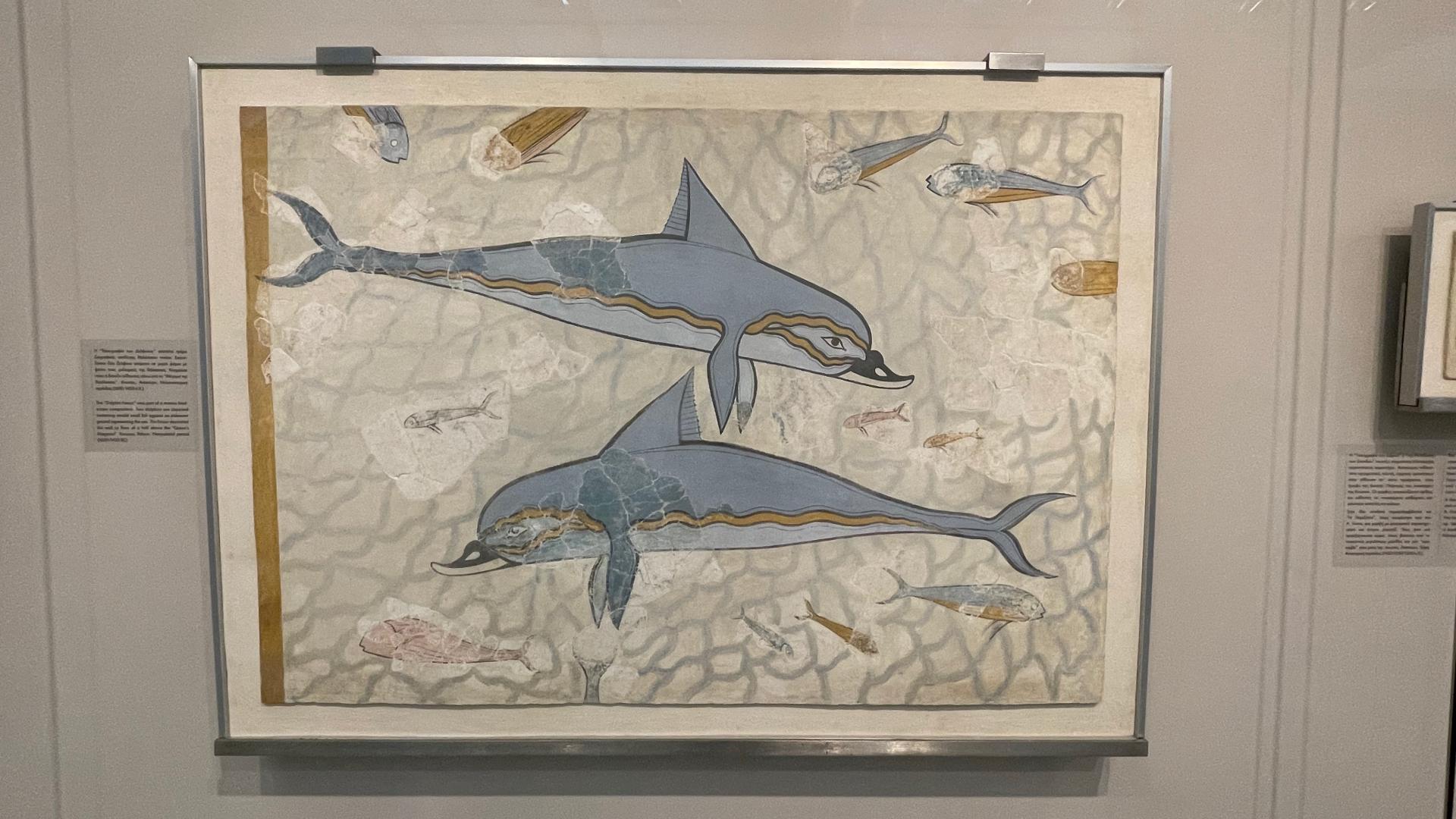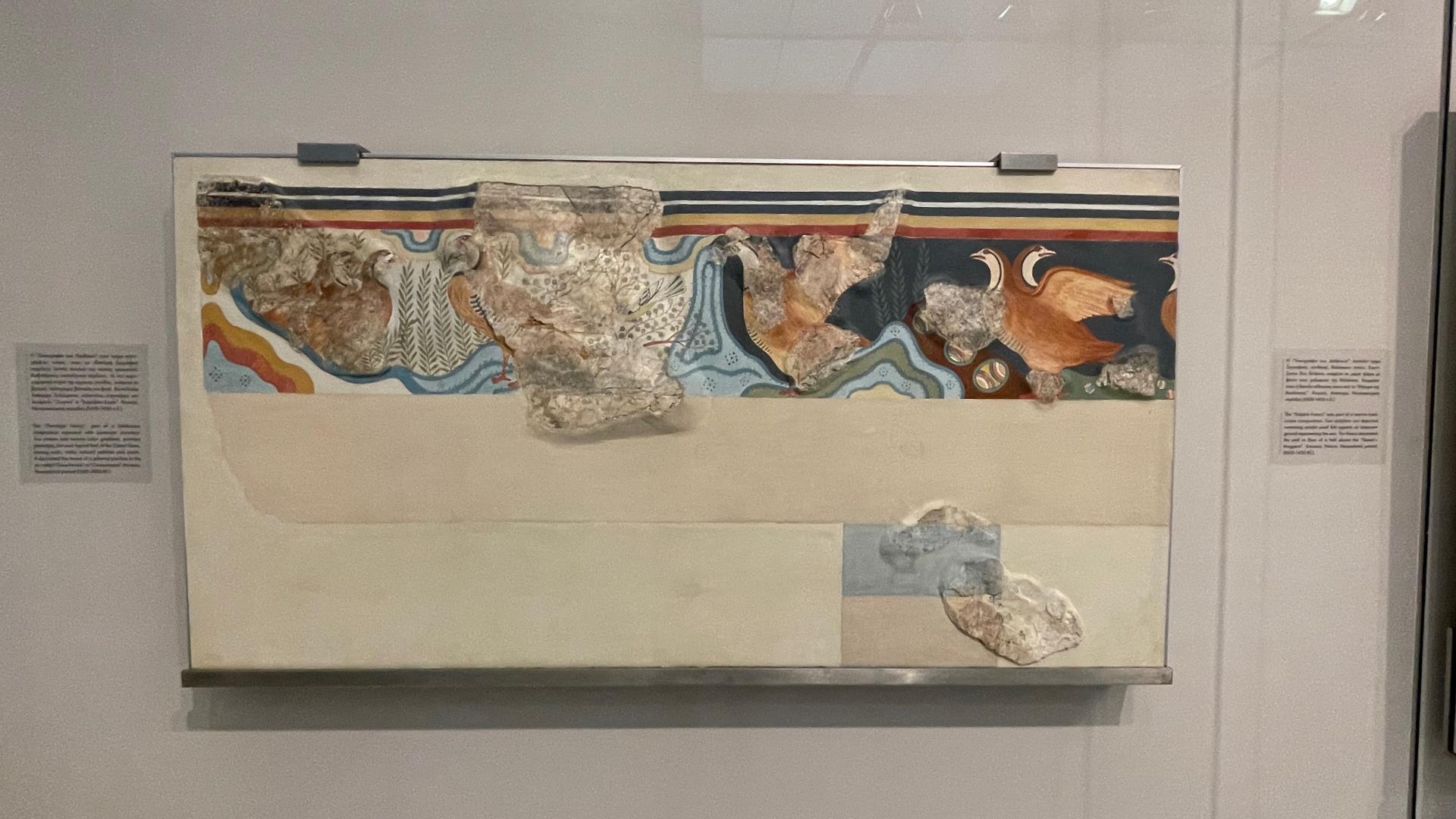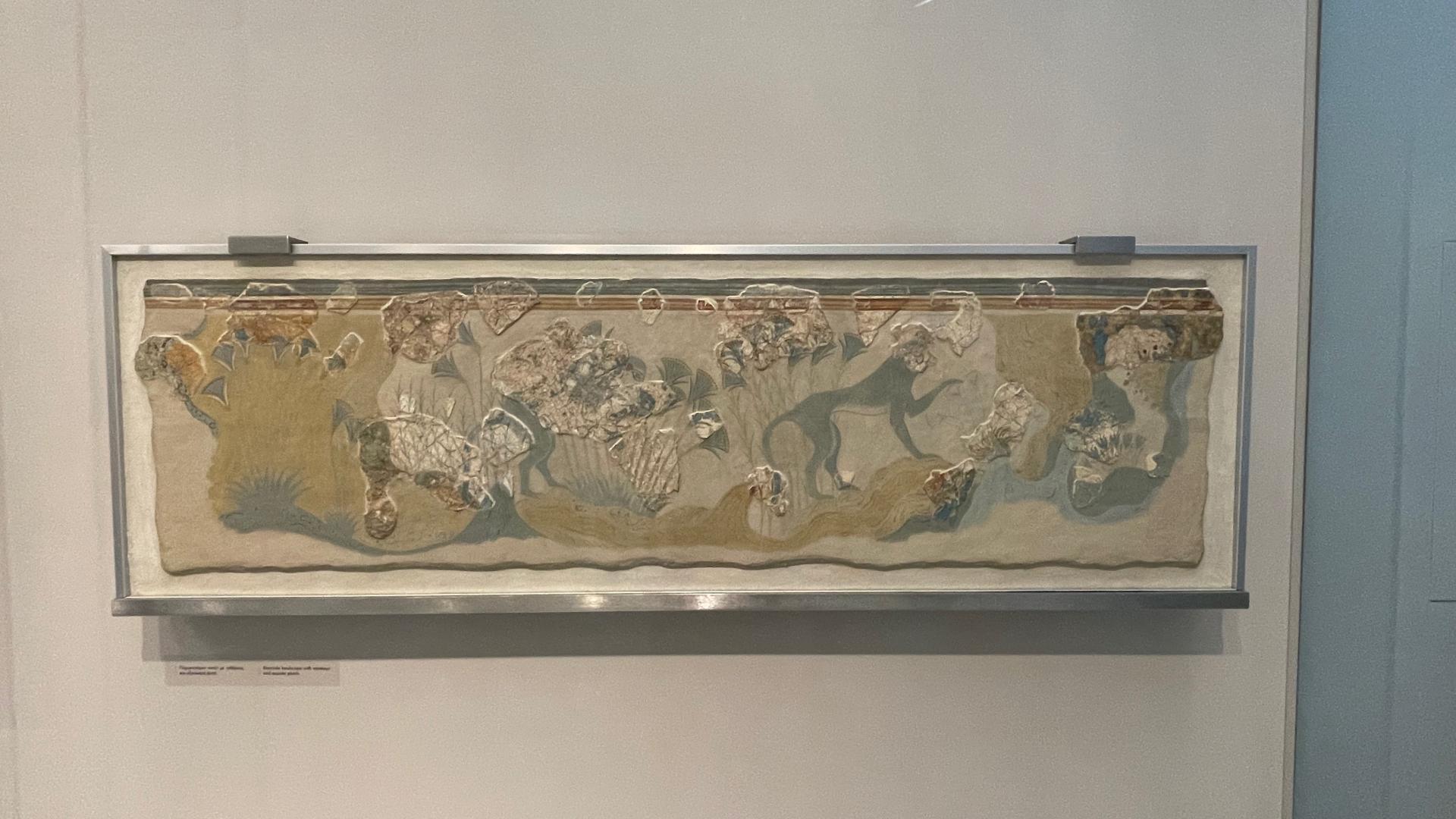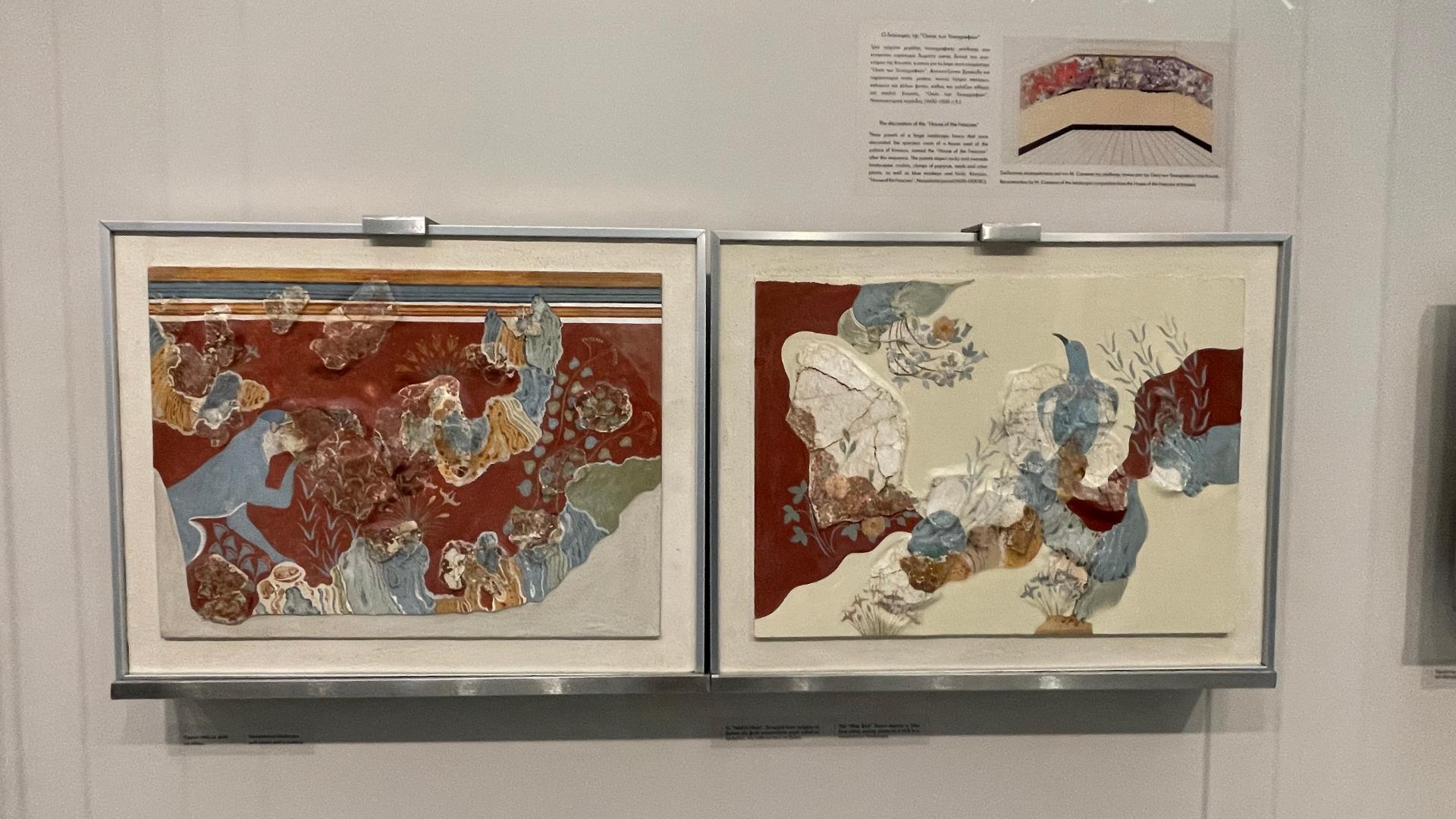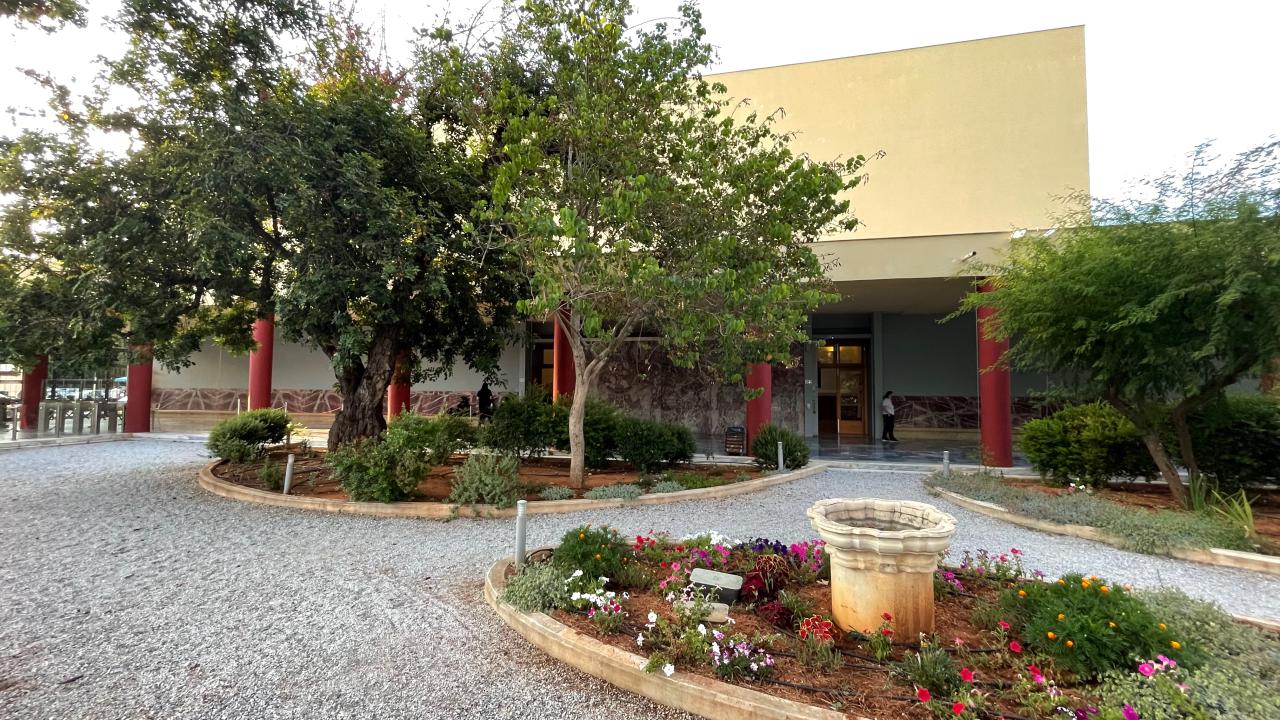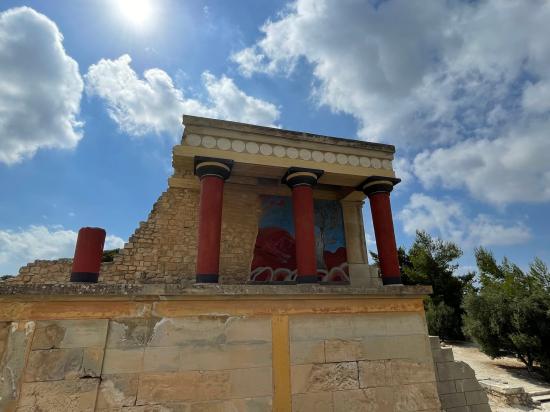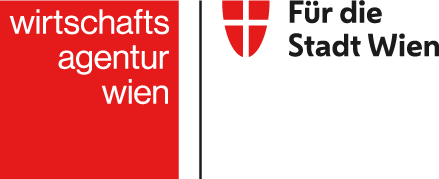Archeological Museum of Heraklion
When to go?
The museum and the Palace of Knossos ware a highlight of Crete's tourism industry and therefore the two places are the most visited places on the island.
If you want to avoid crowded places and waiting in line, we suggest you go to the museum in the morning, as all tourist busses will have their first stop at the Palace of Knossos - the second best time would be after 5 am in the afternoon. Then step out of the museum and take bus line 2 to Knossos for EUR 1,70 and enjoy the excavations.
t may be hotter than in the morning, so it is up to you to decide if you prefer a little more temperature over waiting in line in the same heat, but with many more people.
The museum features the time from the earliest neolithic settlements until the late Roman period and features some outstanding artifacts, some of them world-reknowned.
The Archaeological Museum of Heraklion is one of the most important museums in Greece, and is located in the city of Heraklion, which is the largest city on the island of Crete. The museum is home to an impressive collection of artifacts from the Minoan civilization, which was one of the earliest civilizations in Europe and flourished on Crete from around 2600 BC to 1100 BC.
The museum's collection includes thousands of objects, including pottery, jewelry, tools, weapons, and religious artifacts, which provide a fascinating insight into the daily life, culture, and beliefs of the ancient Minoans. Some of the most important objects in the collection include the Phaistos Disc, which is a mysterious clay disc that features hieroglyphic writing, and the Bull's Head Rhyton, which is a beautiful gold and silver drinking vessel in the shape of a bull's head.
The museum is divided into several sections, including a section on the Neolithic and Early Minoan period, a section on the Middle Minoan period, and a section on the Late Minoan period. The museum also features a room dedicated to the famous Minoan frescoes from the palace at Knossos, which depict scenes of everyday life, religious rituals, and mythical creatures.
In addition to its impressive collection of Minoan artifacts, the museum also features objects from other periods of Cretan history, including the Geometric, Classical, and Roman periods. Visitors can also see a collection of artifacts from the Greek and Roman city of Gortyn, which was one of the most important cities in Crete during the Classical period.
Overall, the Archaeological Museum of Heraklion is a must-visit destination for anyone interested in the history and culture of Crete and the ancient Minoan civilization. The museum's impressive collection of artifacts, beautiful displays, and informative exhibits provide a fascinating insight into the lives of the people who lived on Crete thousands of years ago.
Highlights of the museum:
- Phaistos Disc
- Snake Goddess
- Malia Pendant
- Rythion in form of a bull
- Frescoes form the Palace of Knossos (eg. bull leaper)
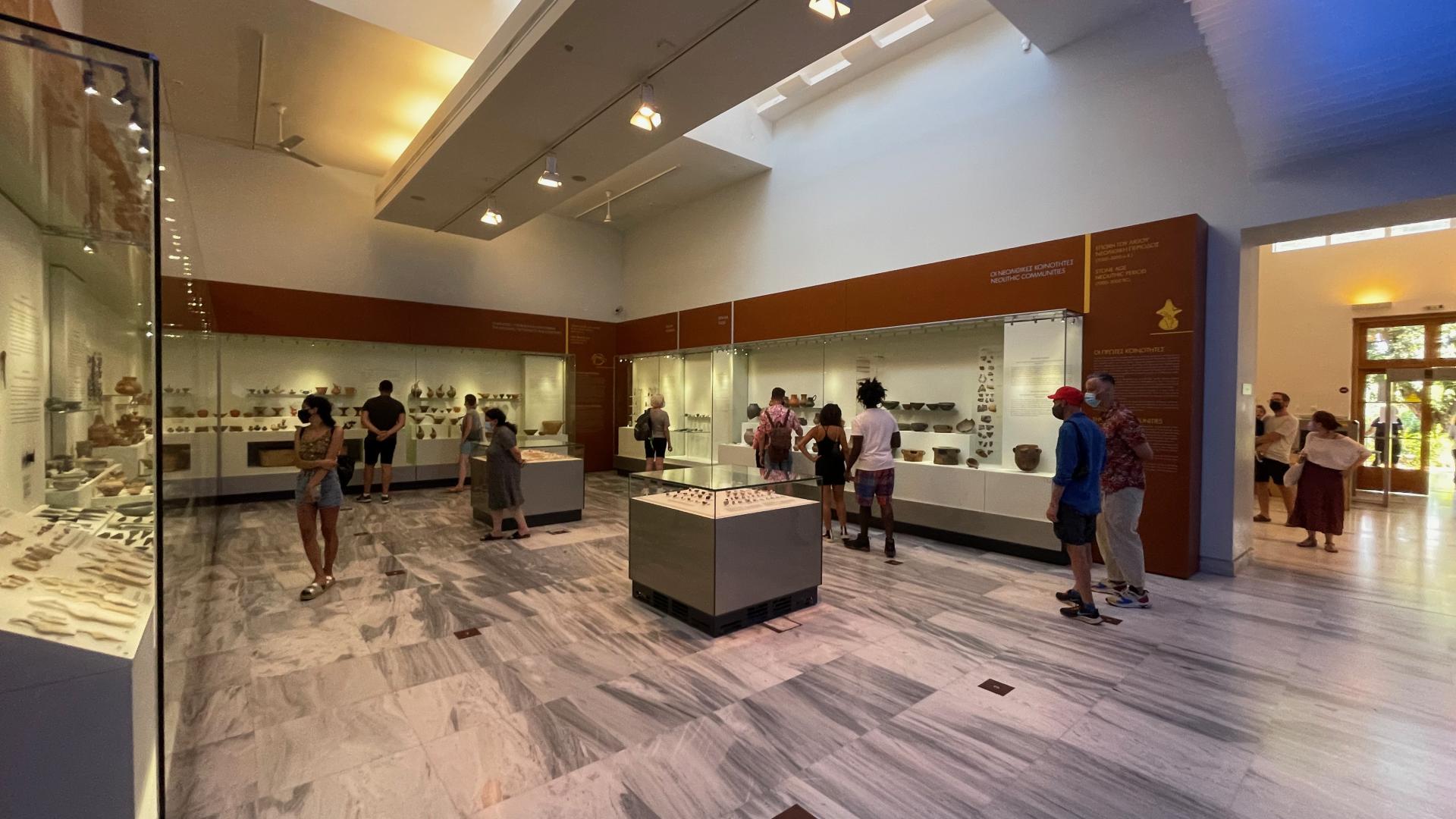
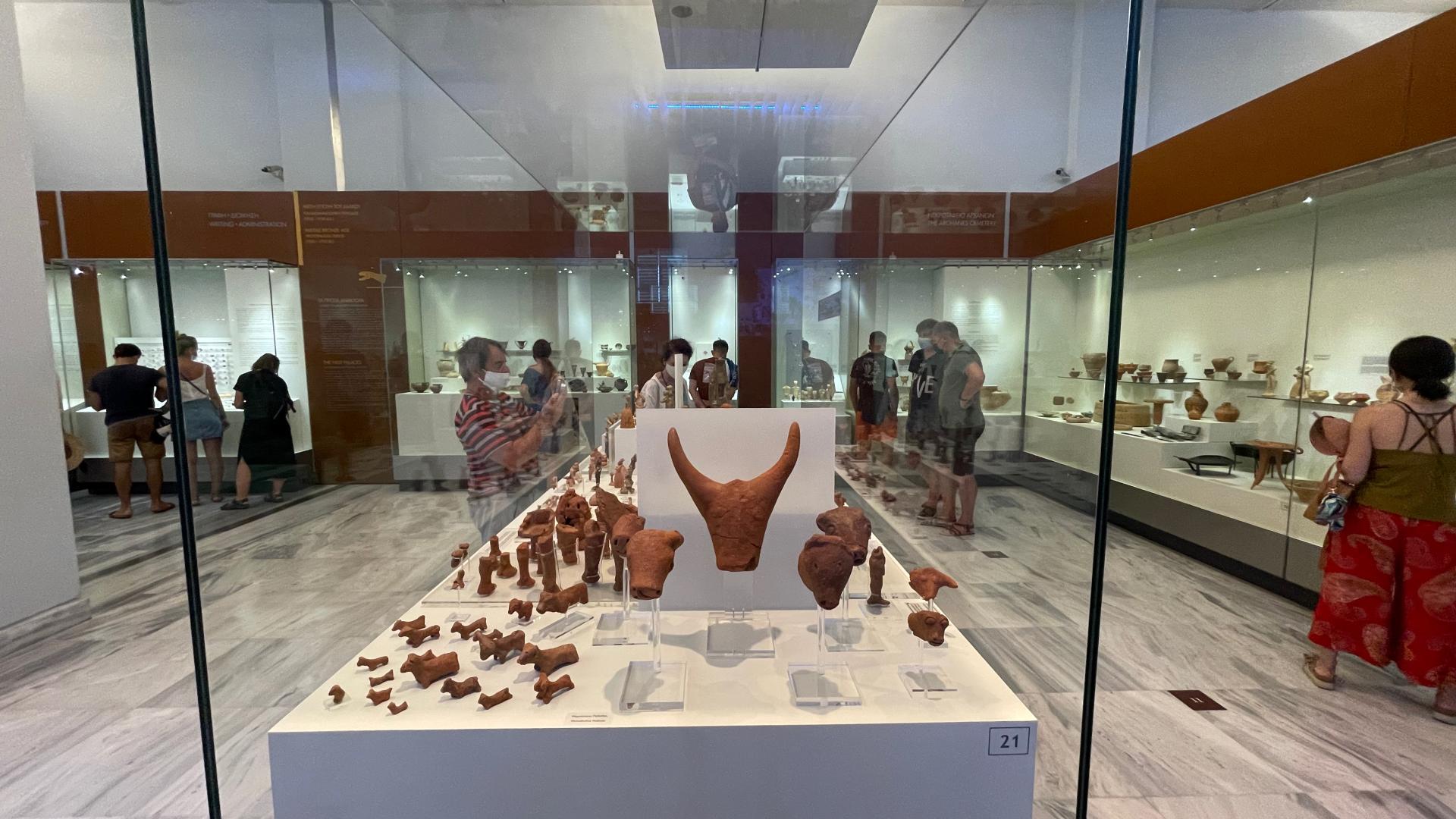
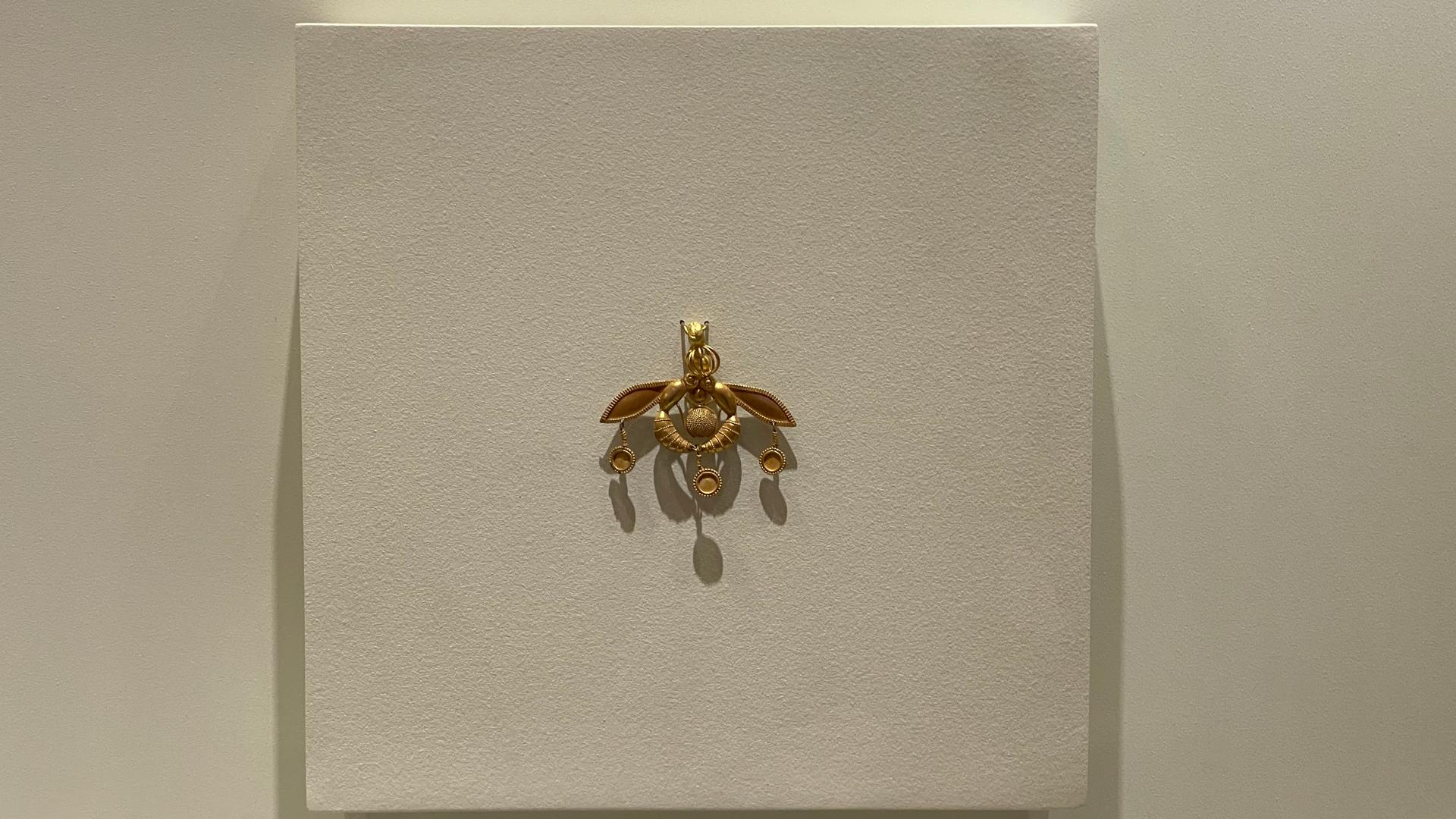
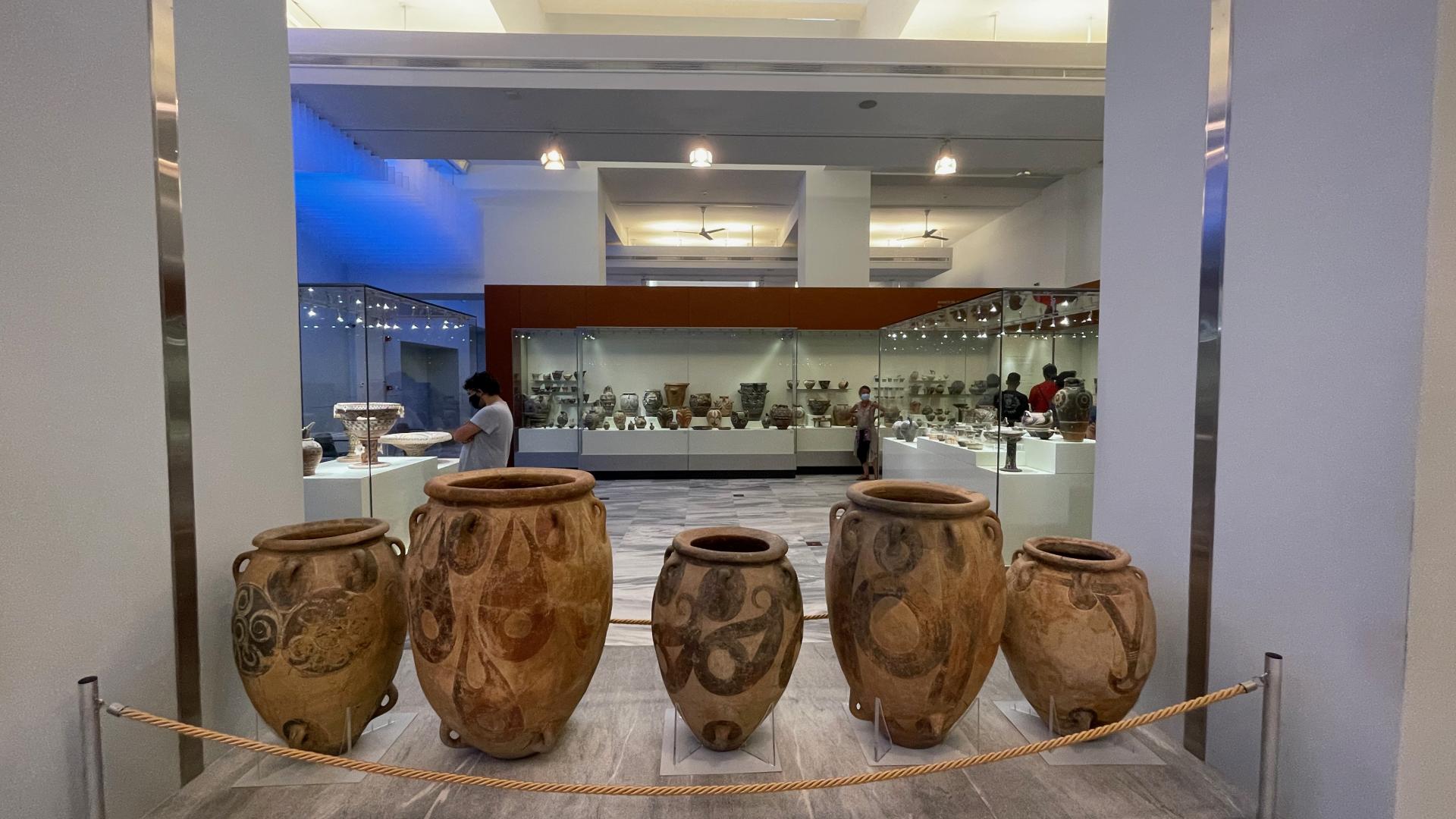
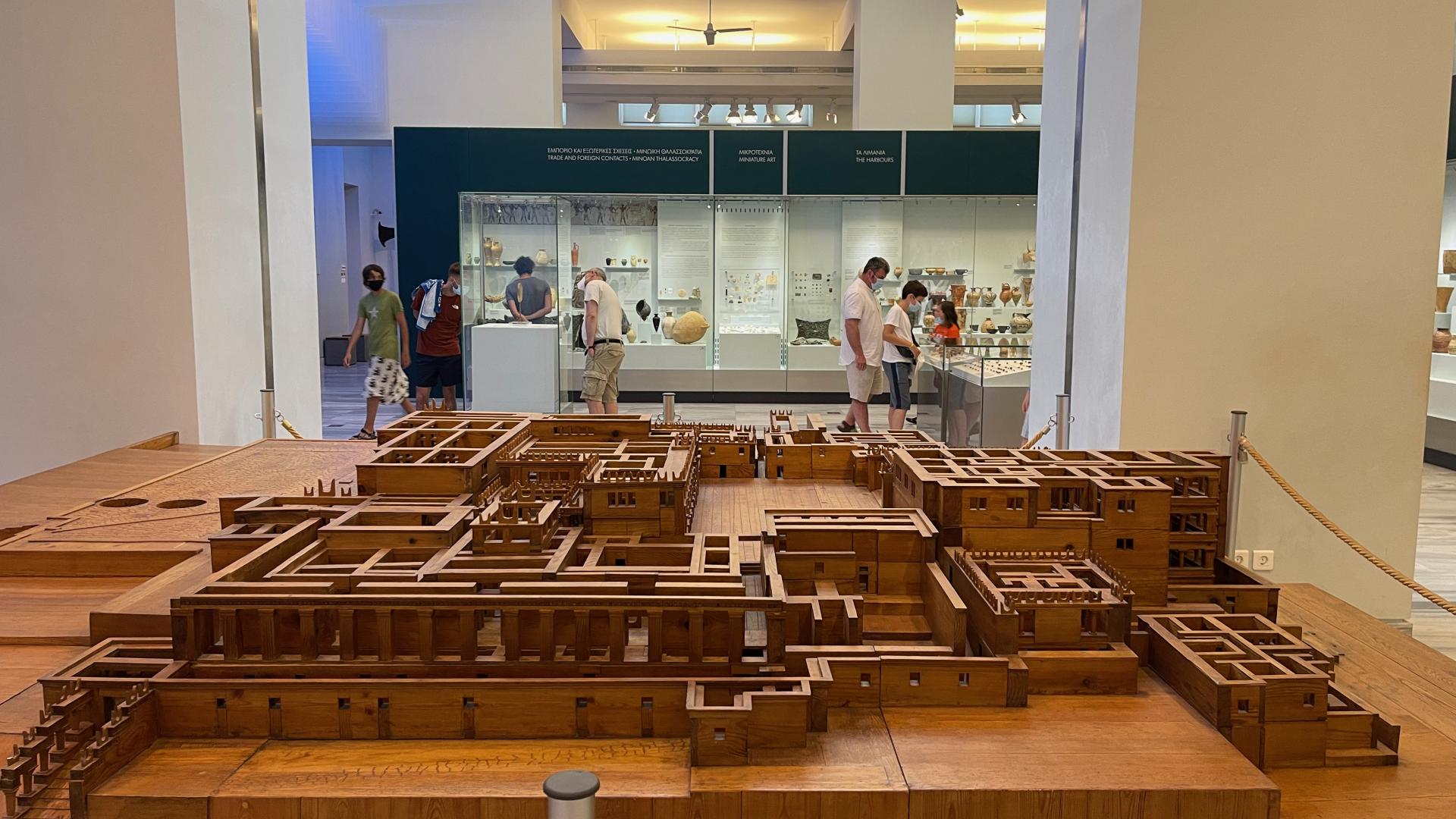
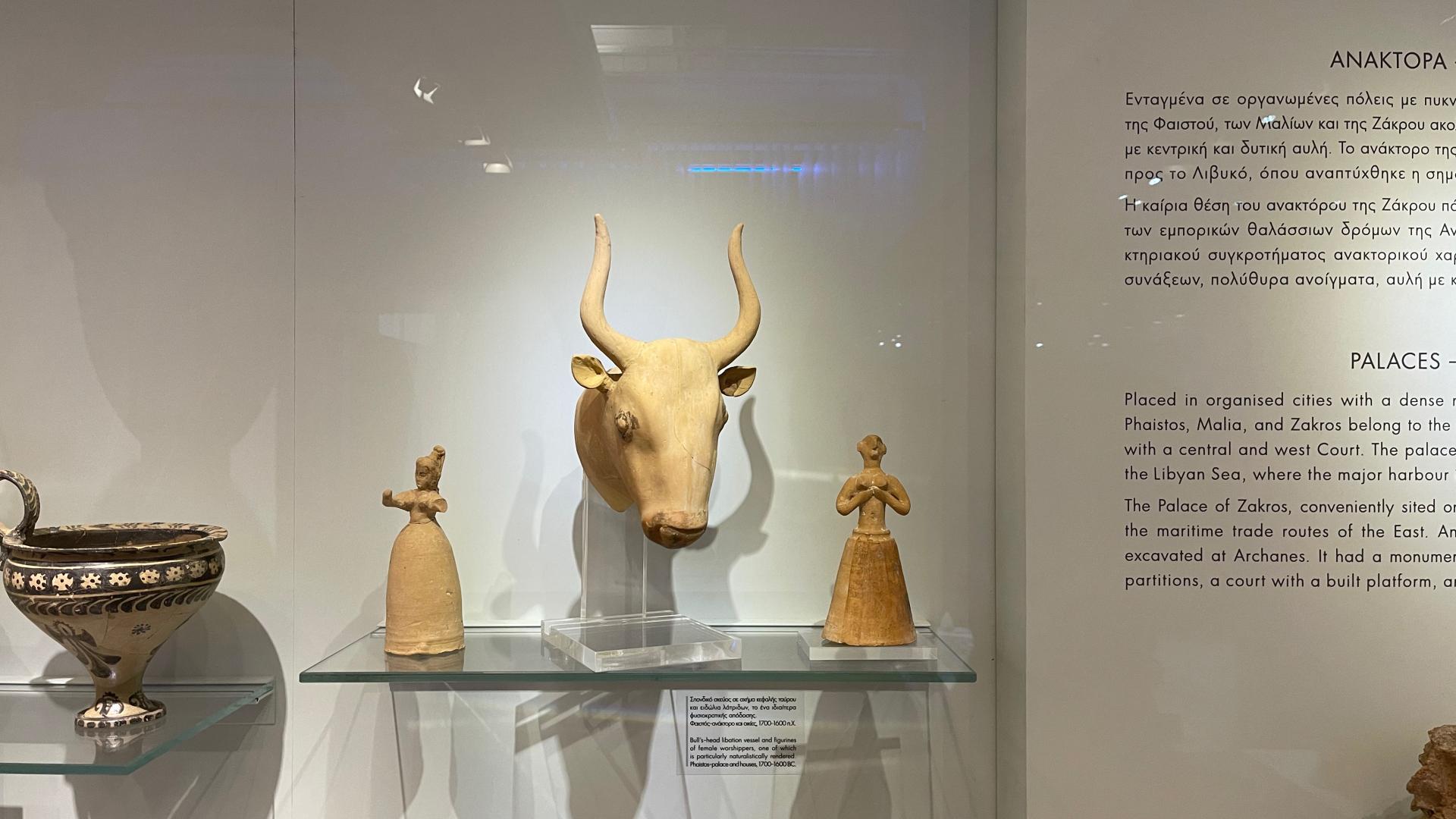
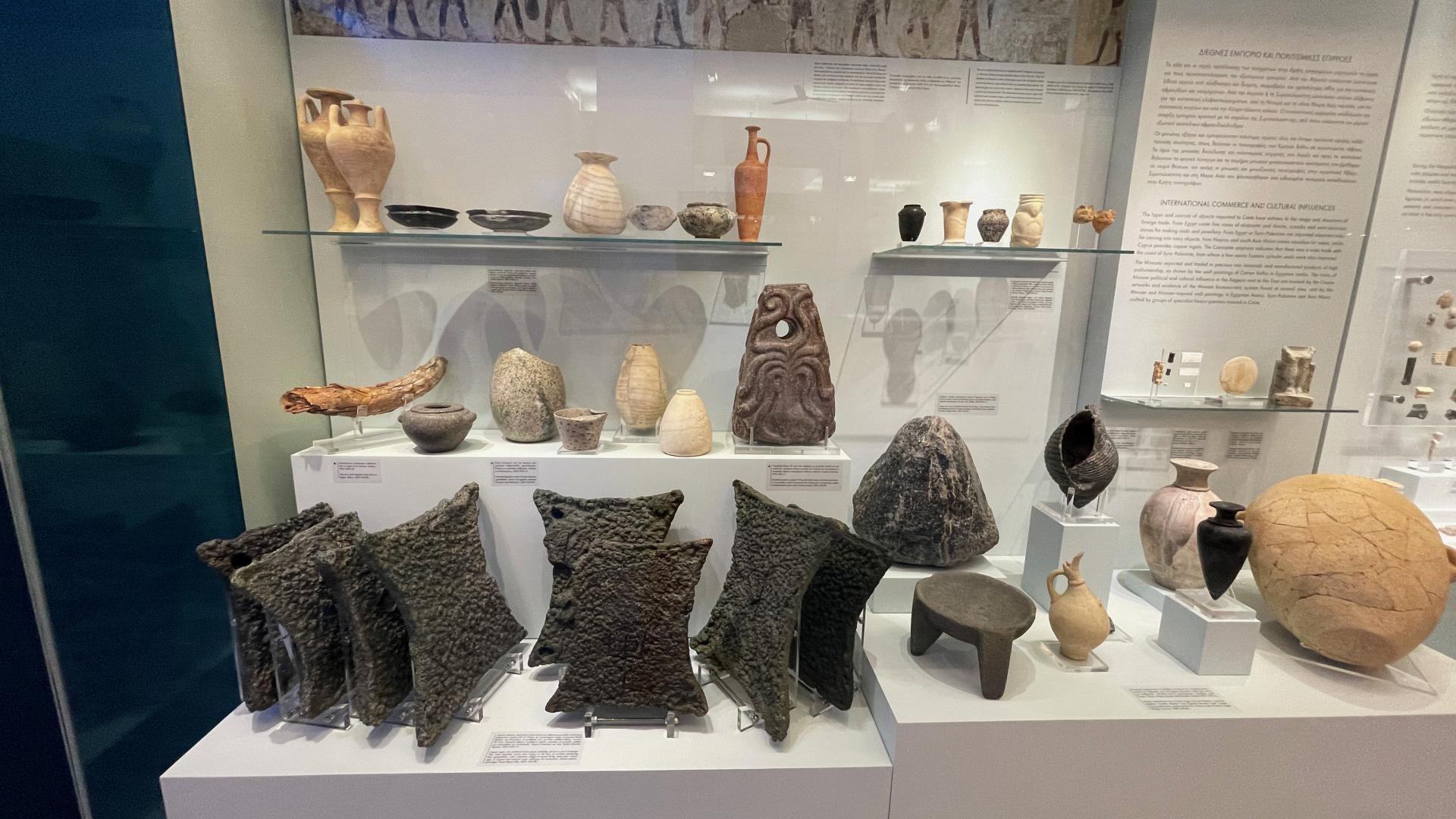
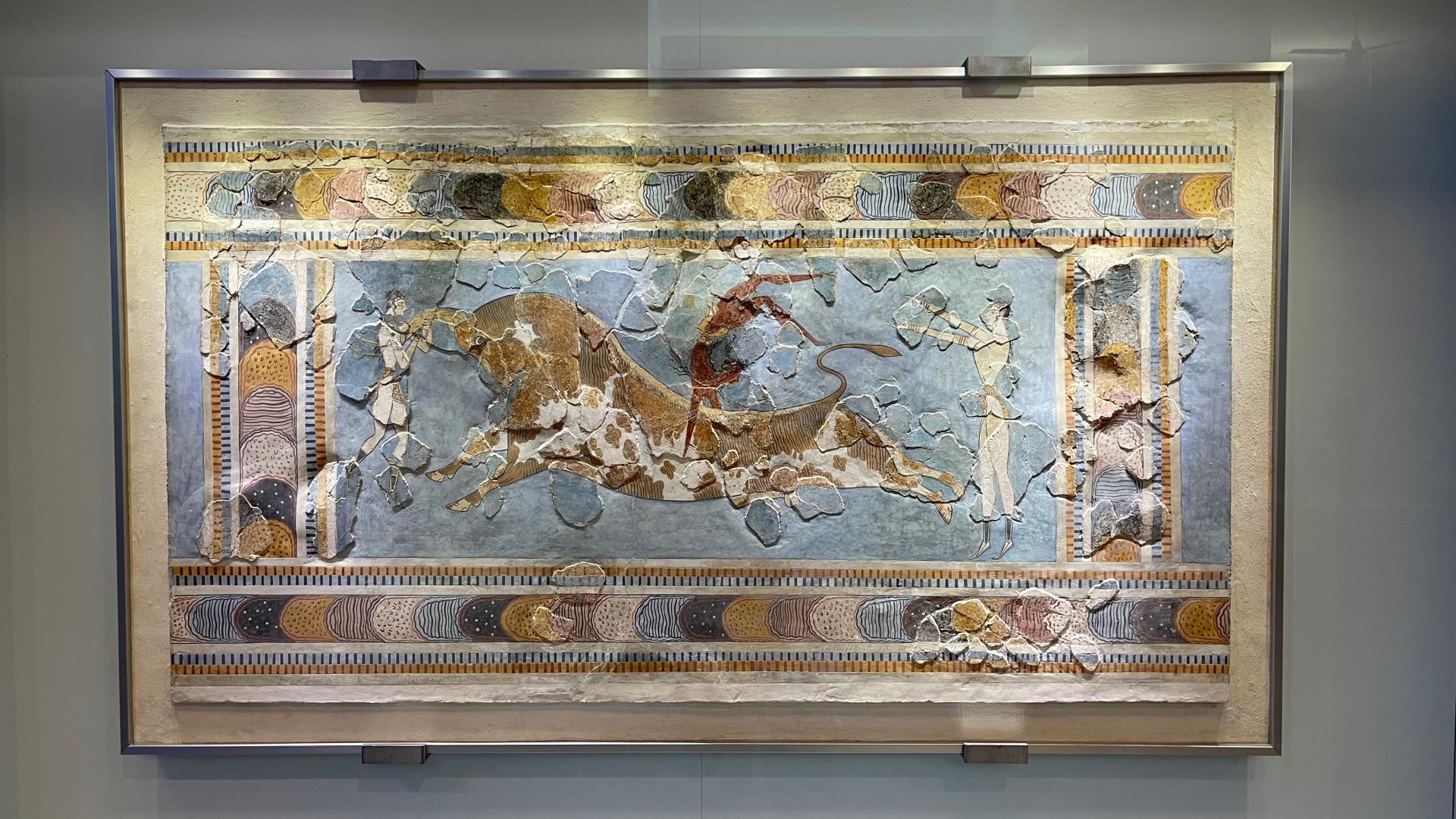
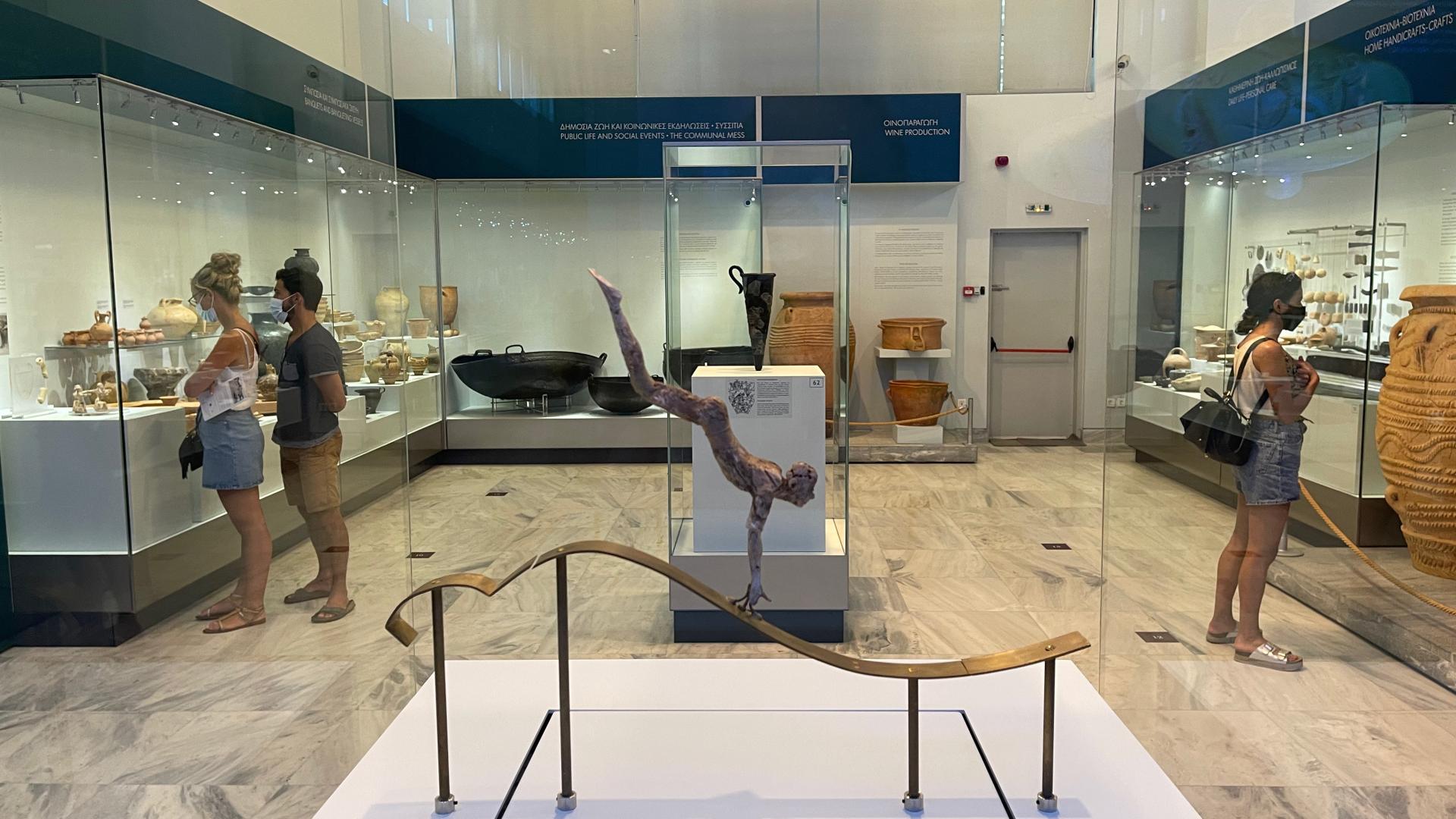
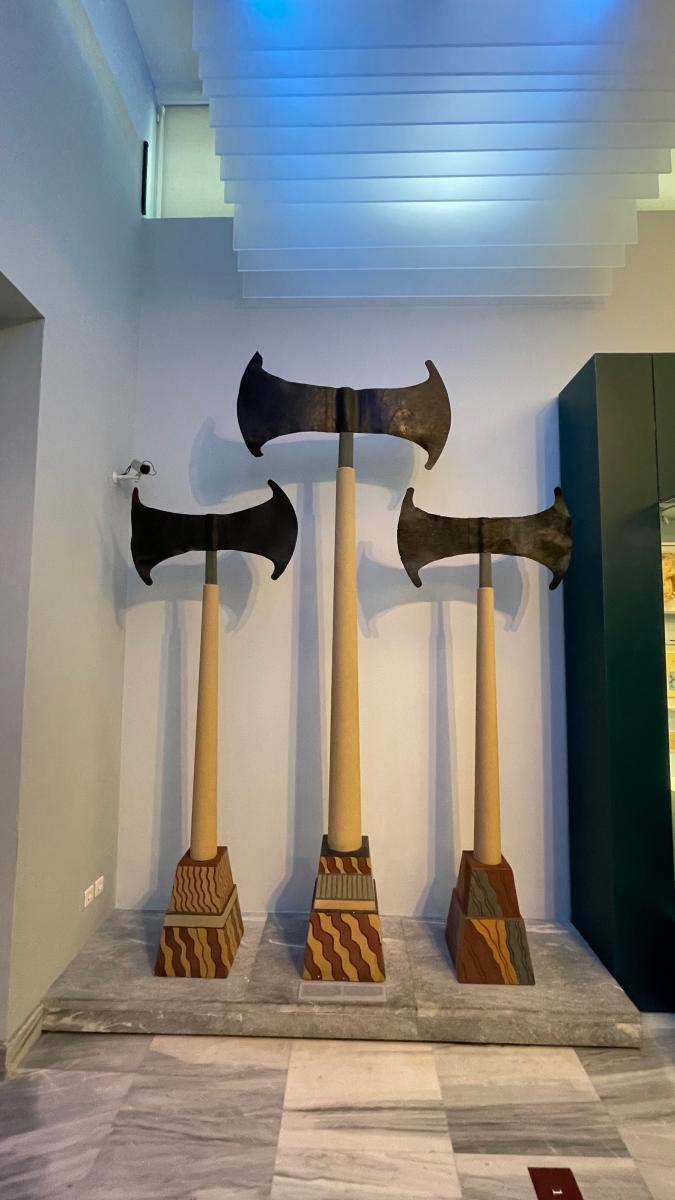
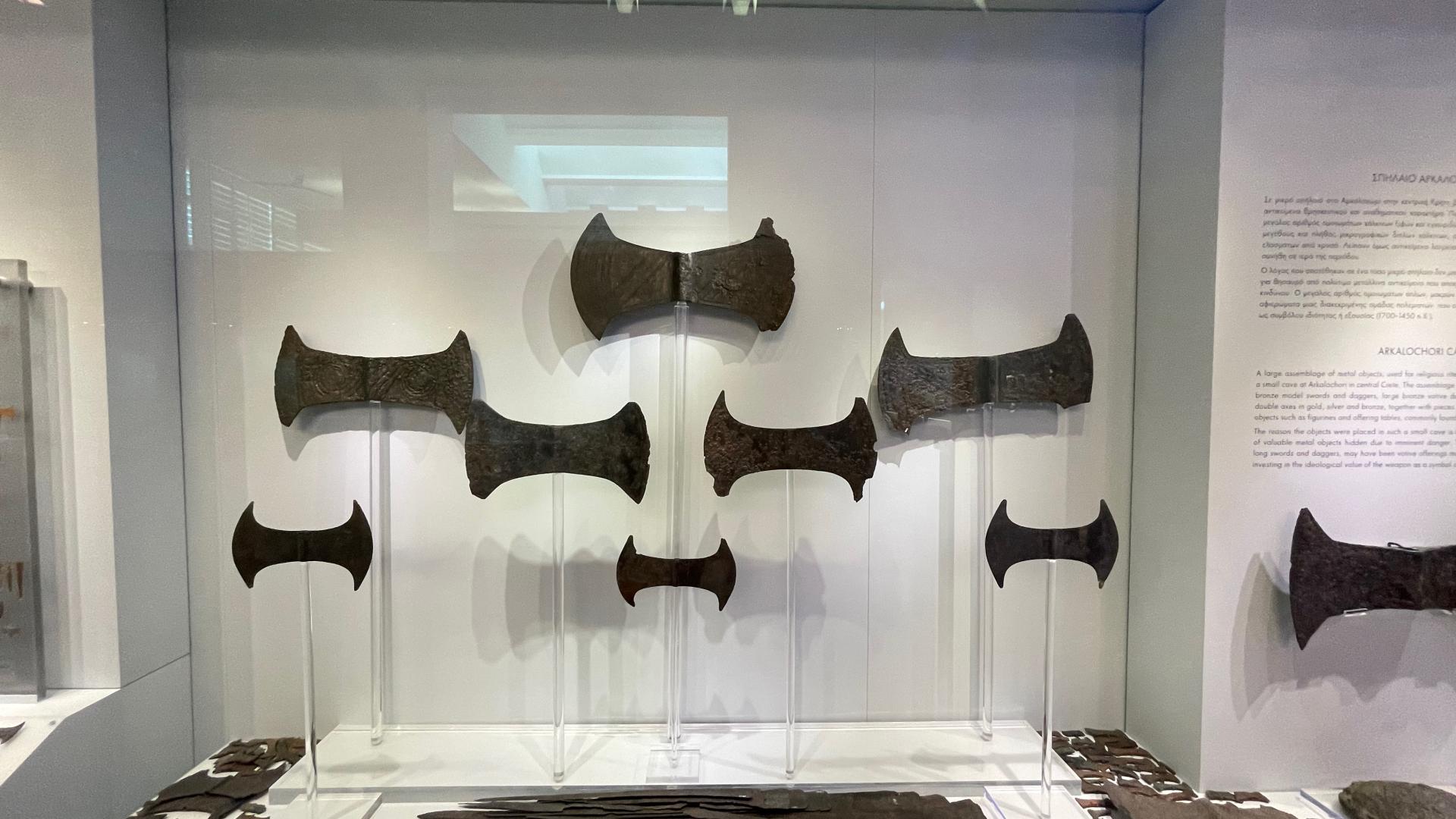
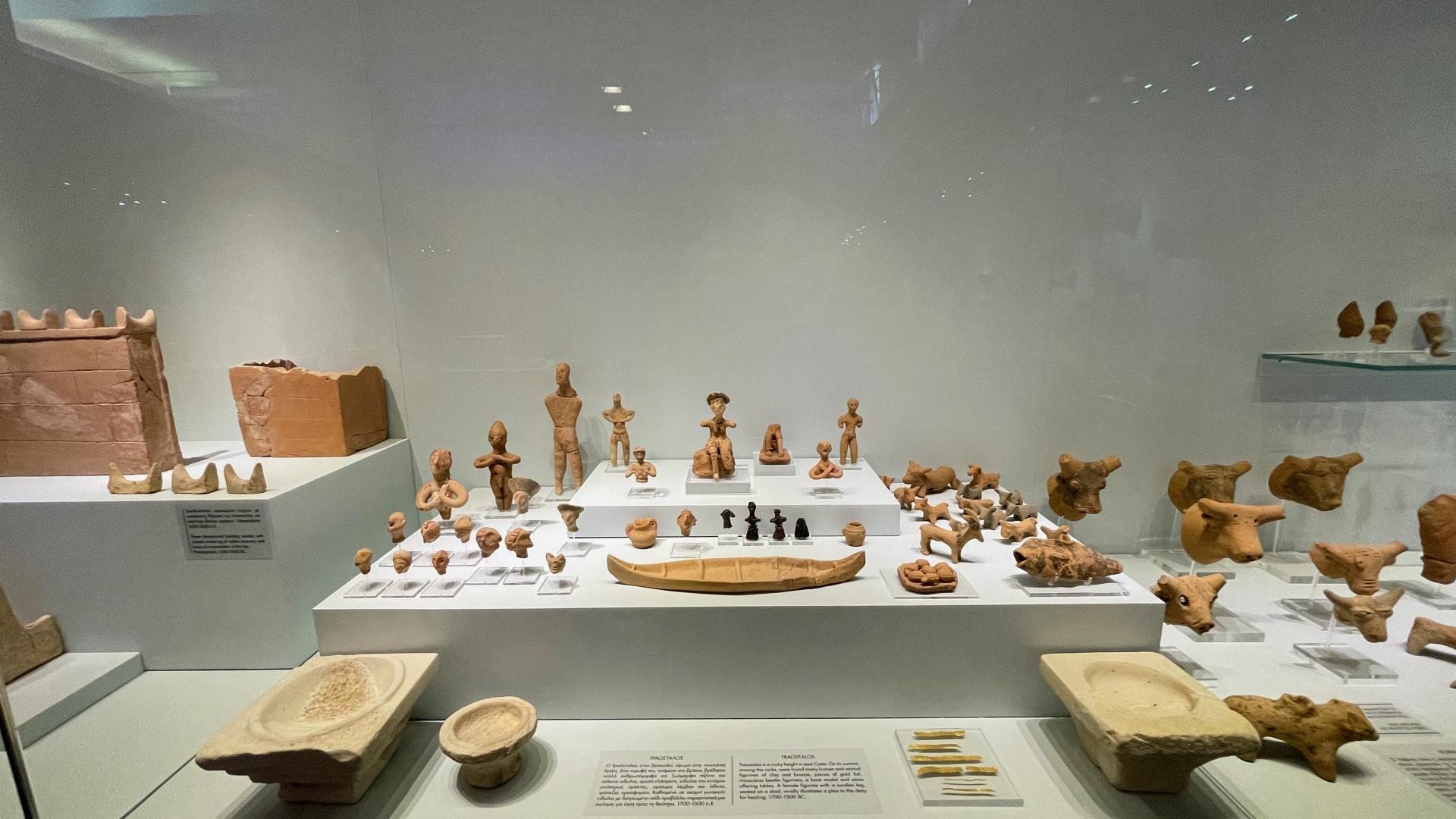
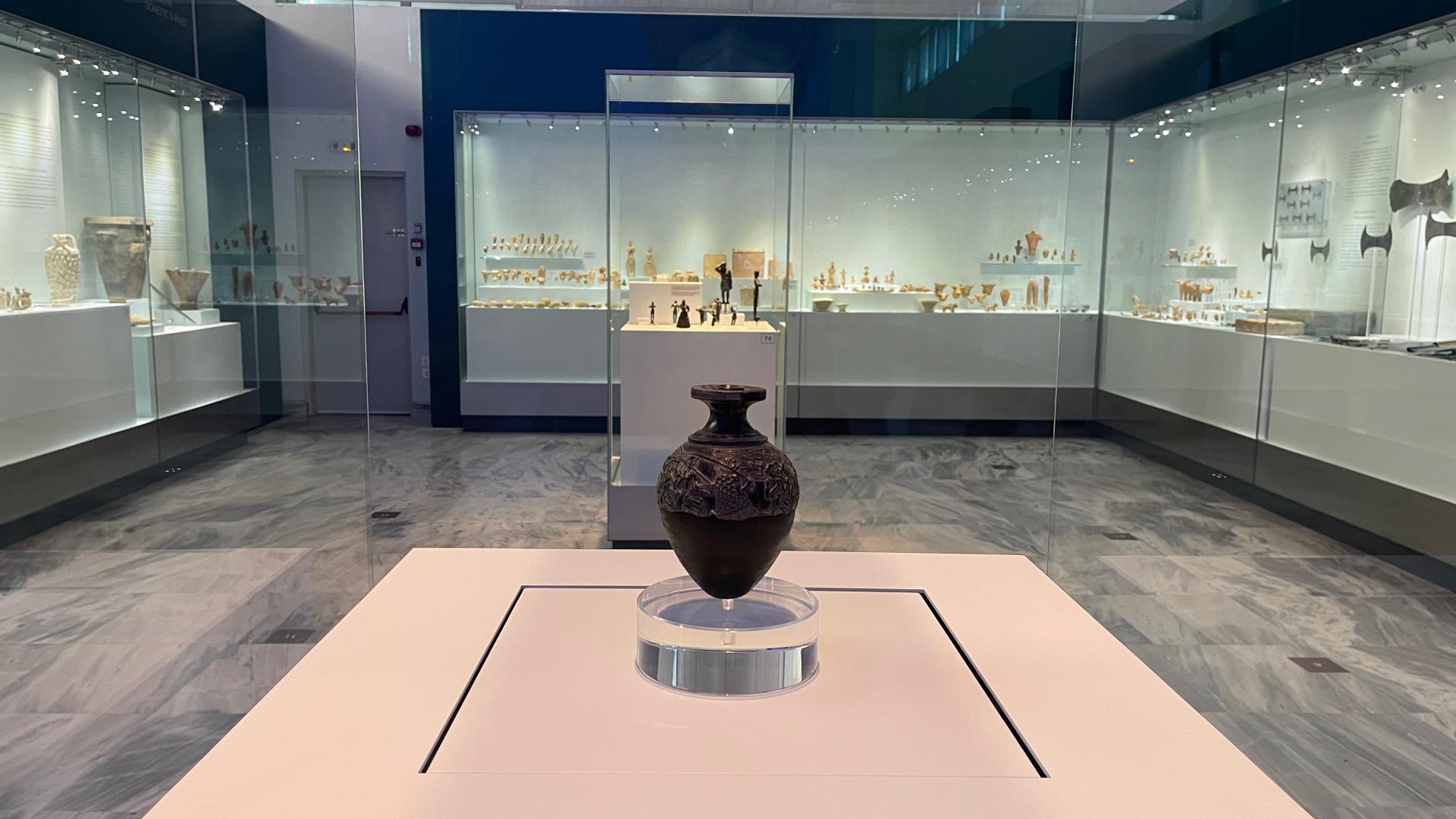
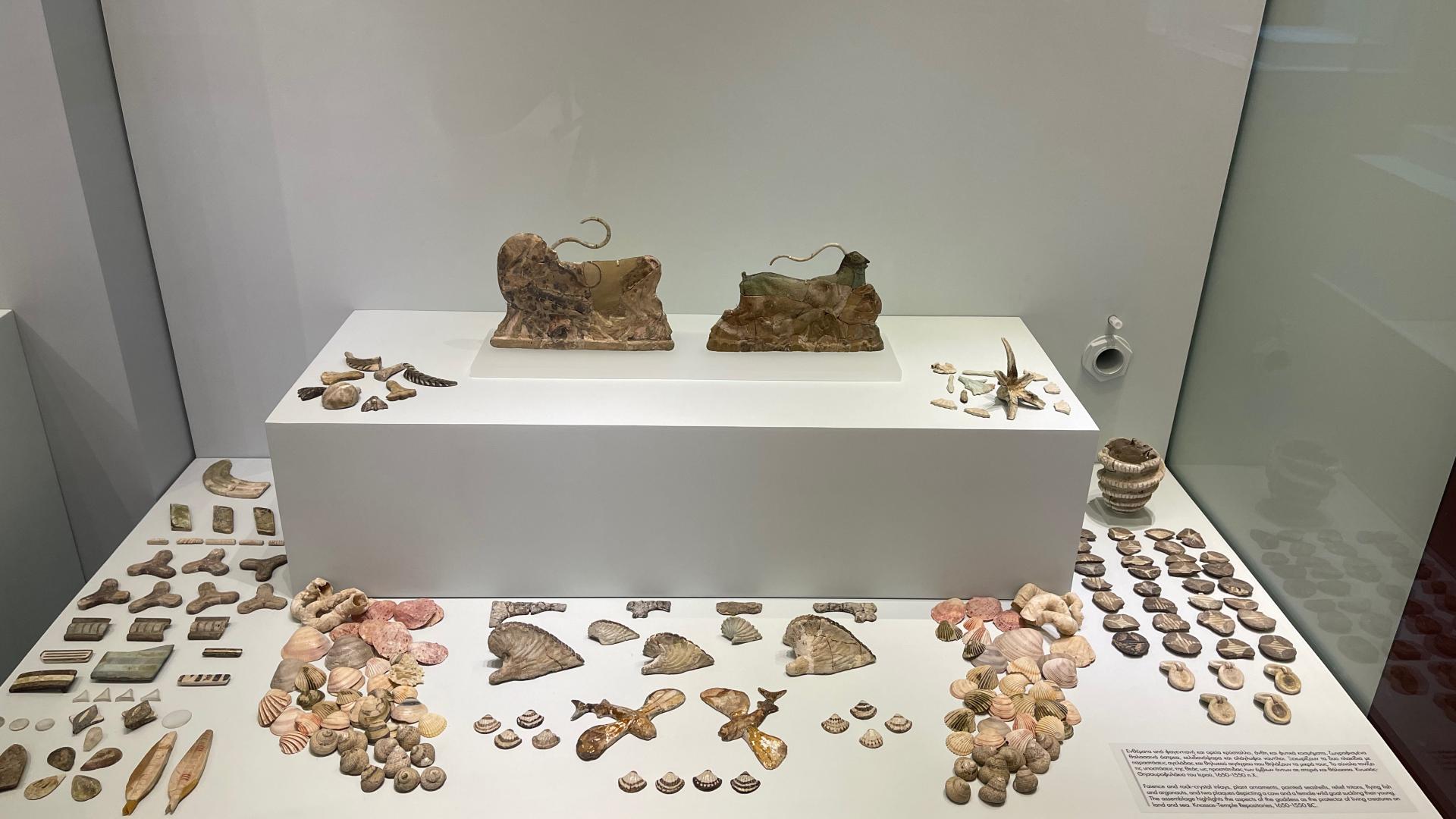
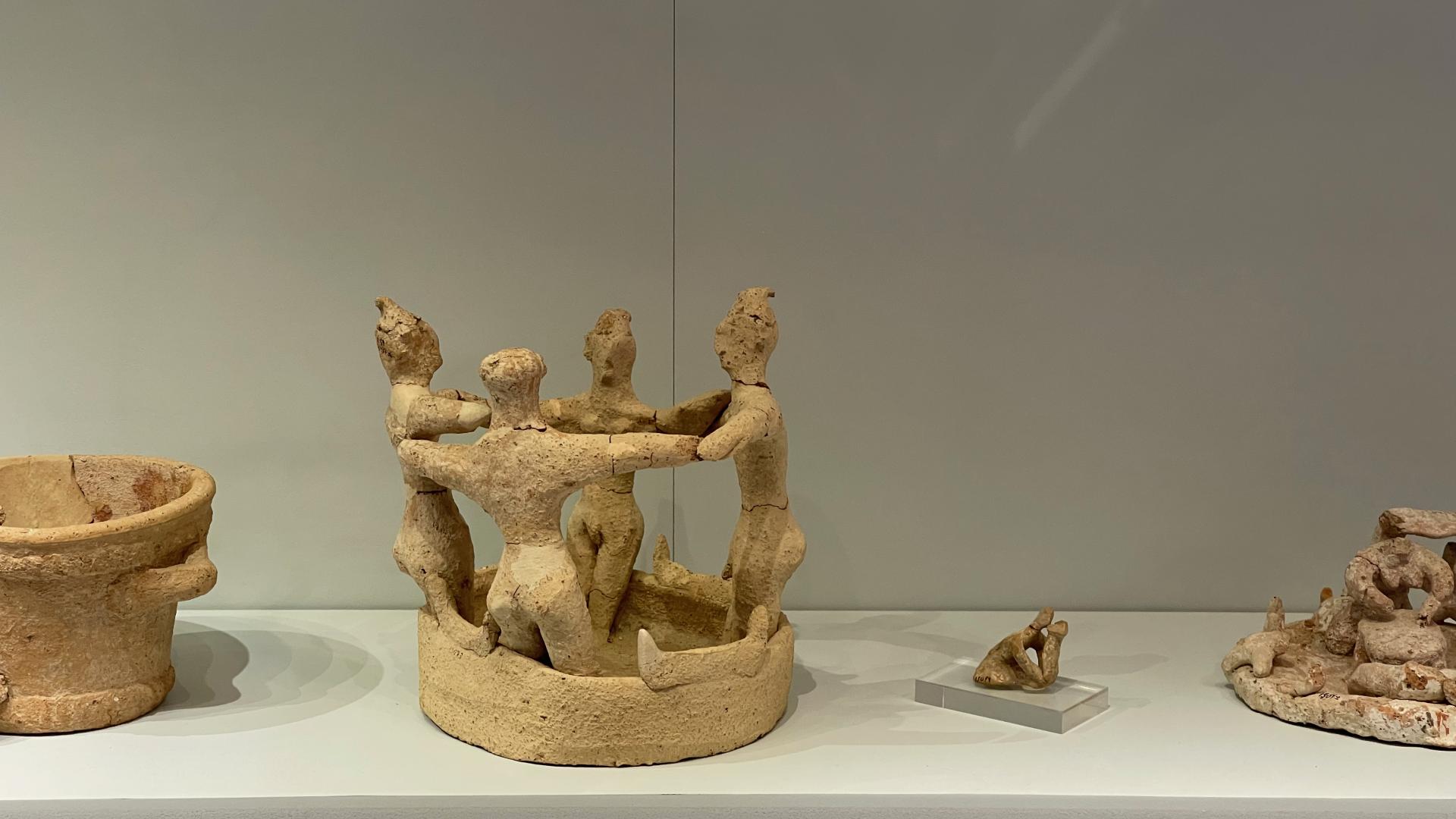
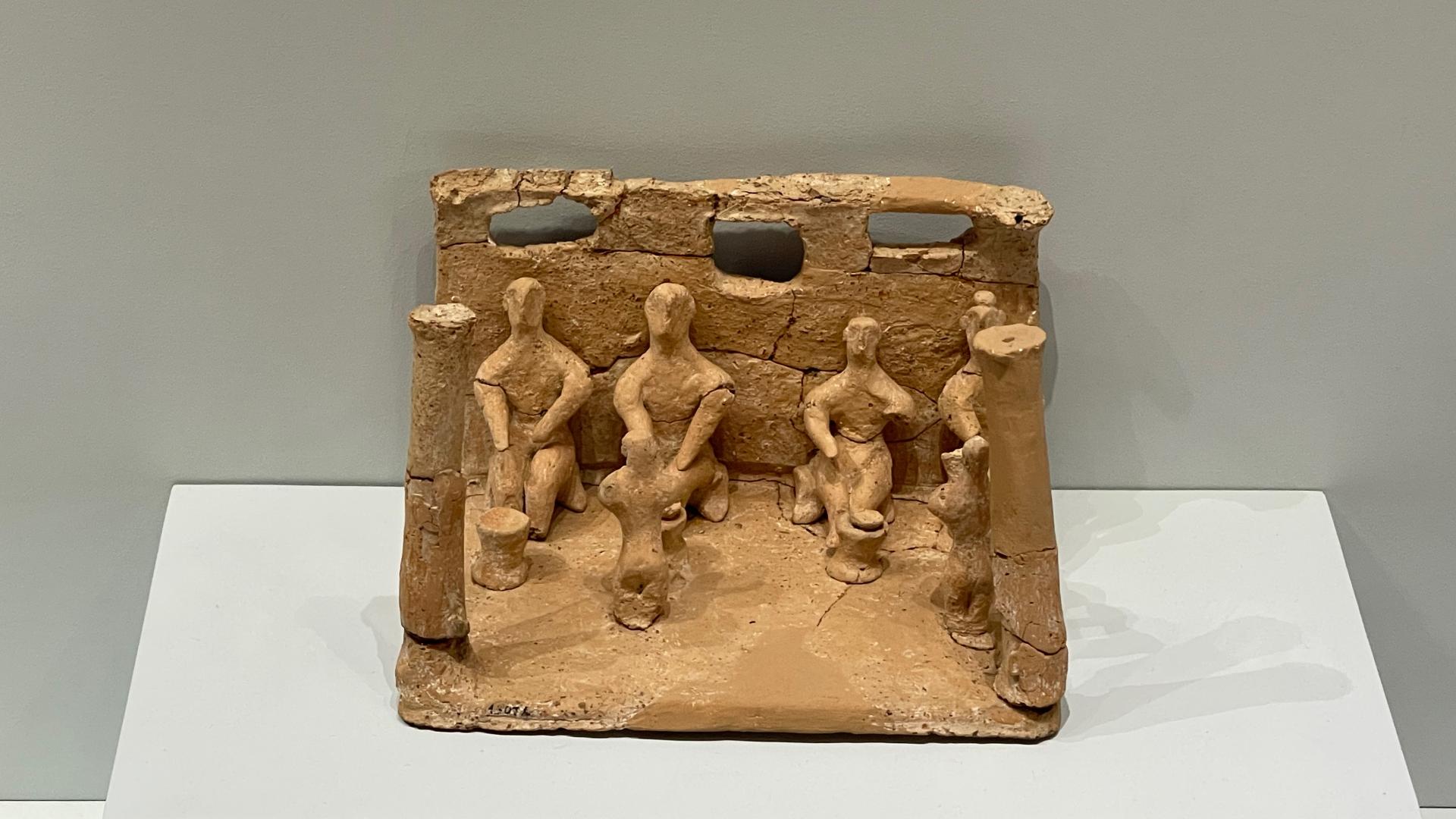
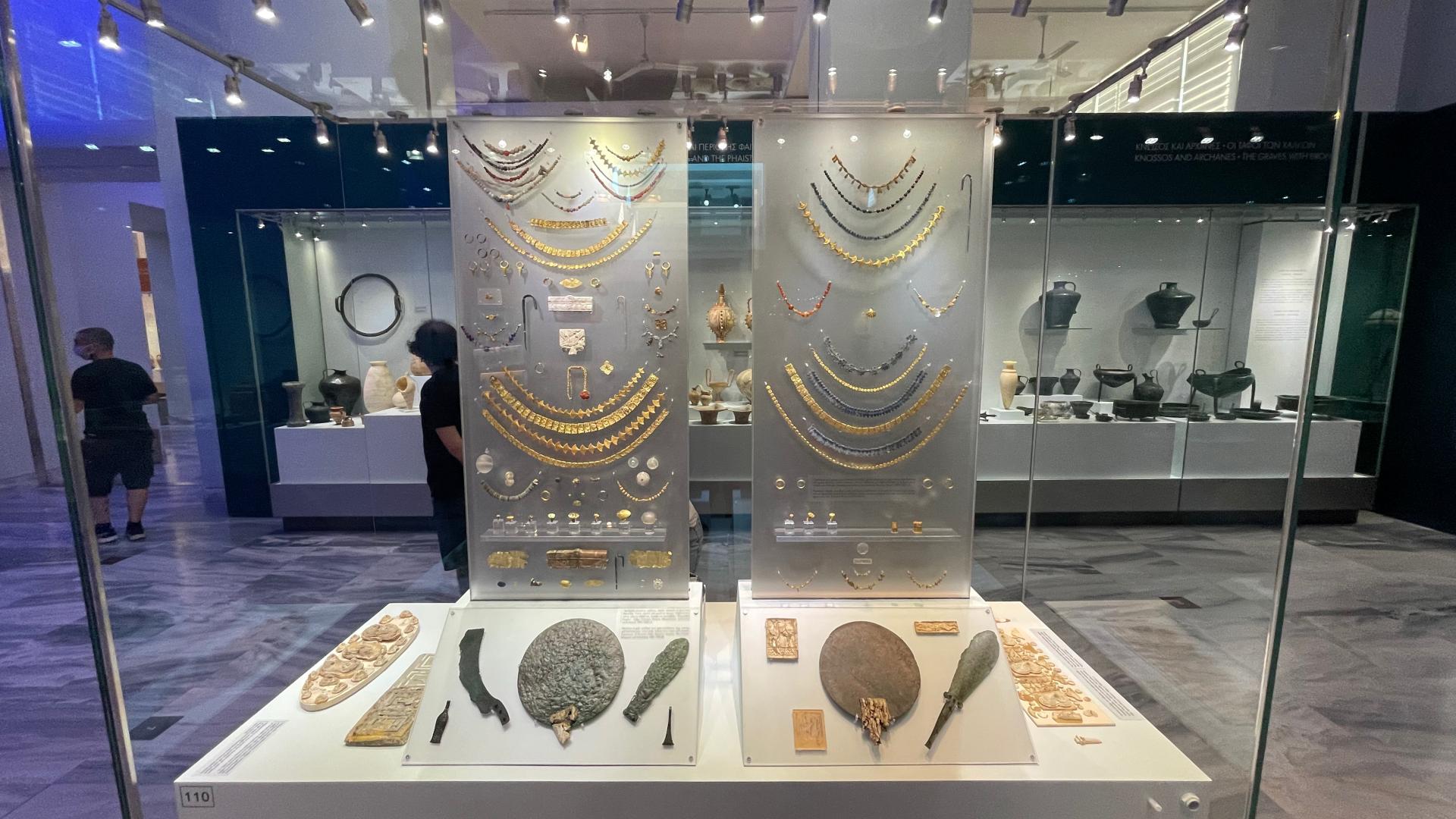
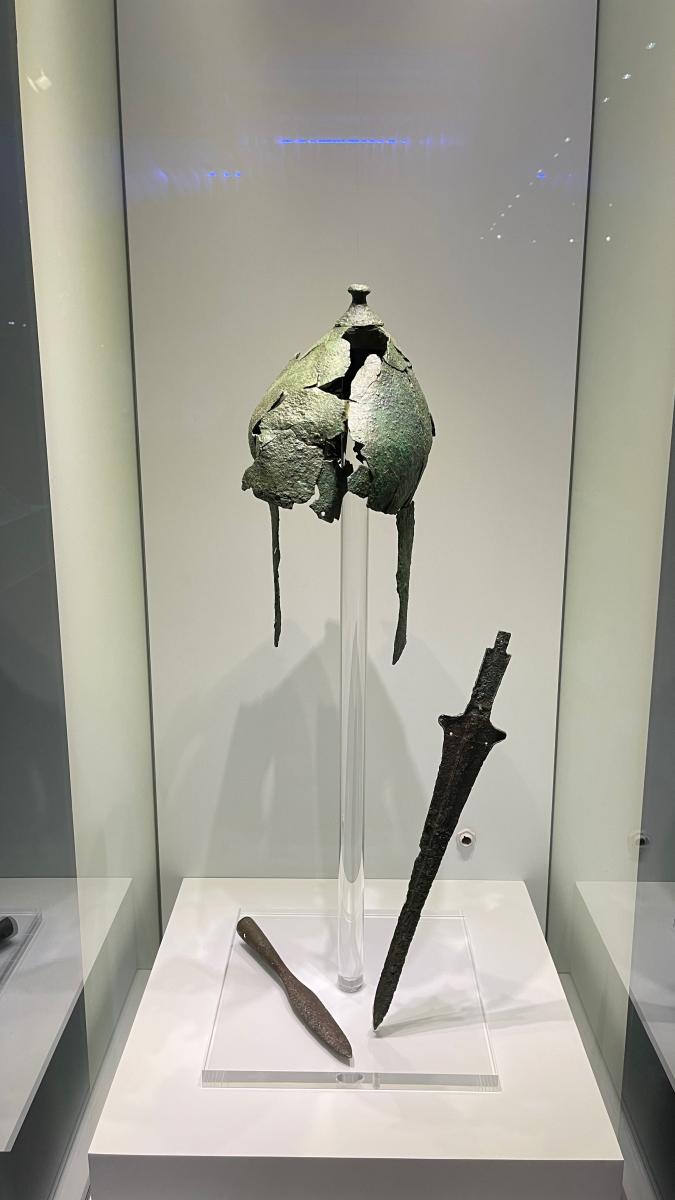
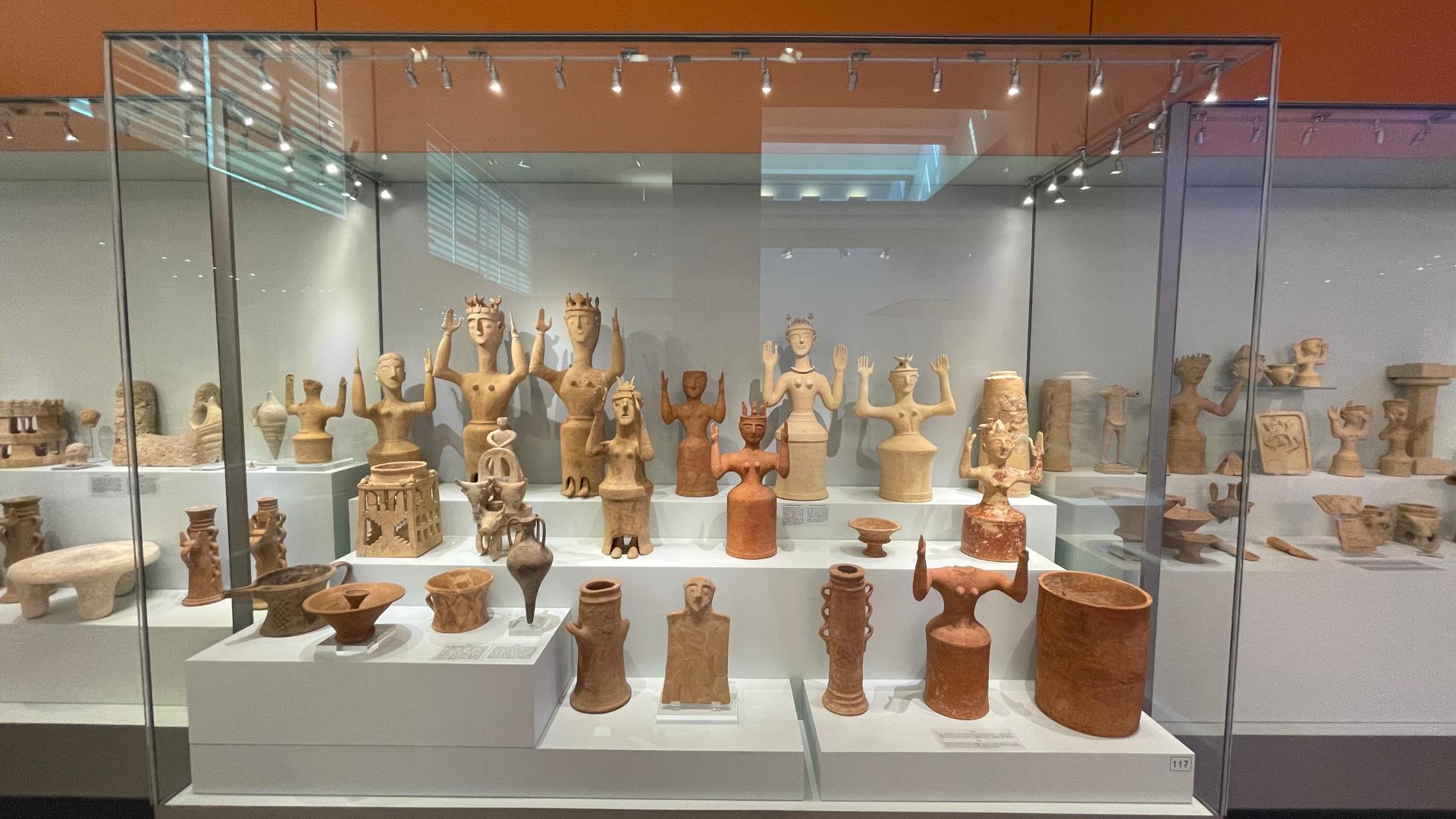
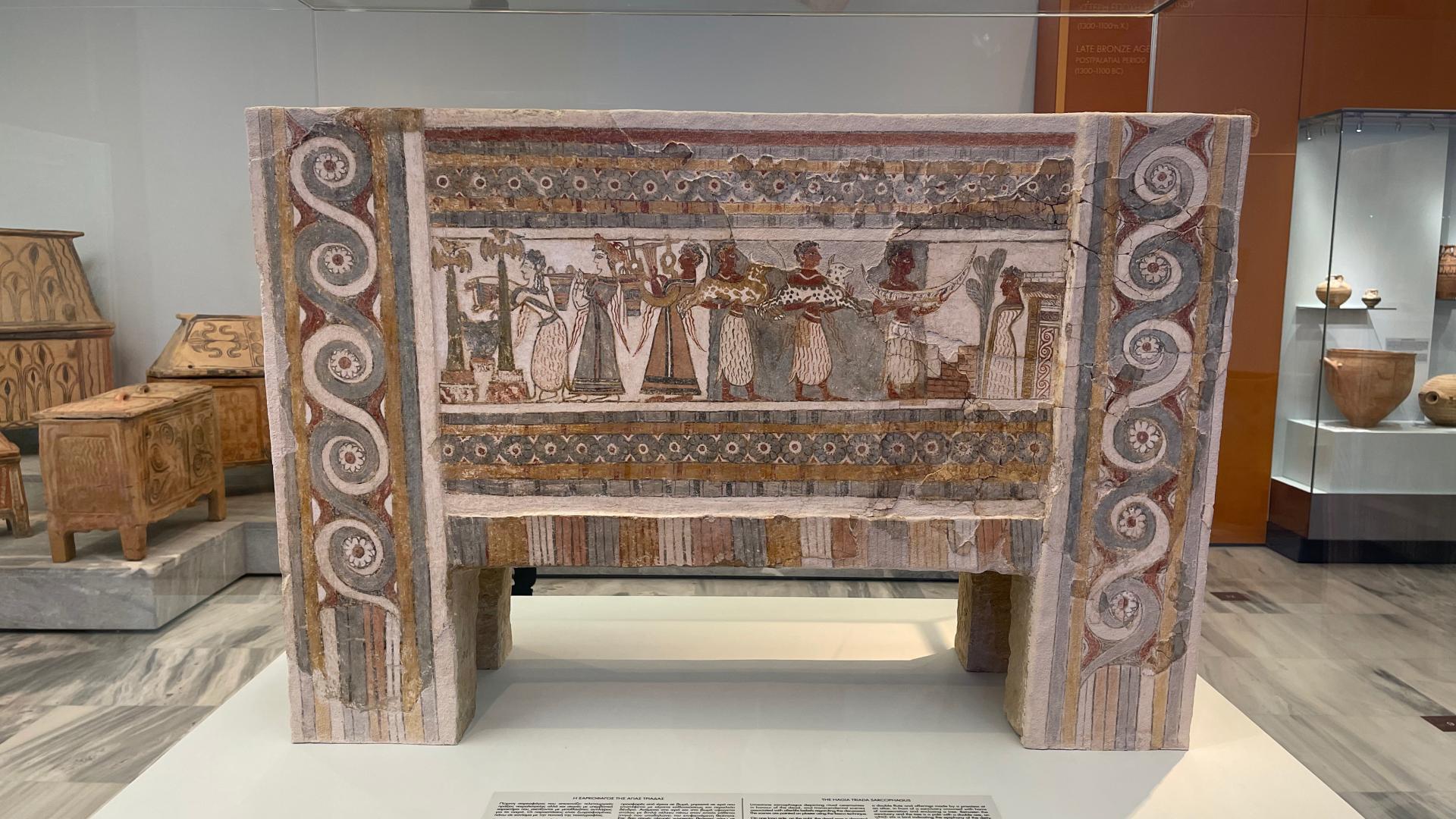
The most prominent artifact probably is the Phaistos Disc, a disk of fired clay with mysterious signs and symbols that resemble hieroglyphic writing. It's really a mystery. Some "icons" resemble "Linear A" and "Linear B" writing, both pre-greek writing system, but then, there are other hieroglyphs that nobody can explain. Back then, scholars believed the disc to be a sophisticated forgery, but these days, most scholars consider the disc authentic.

Another interesting find is the Snake Goddess and her "daughter", not resembling depictions of the Greek gods and goddesses we all know well. Scholars believe that Bronze Age Minoans worshipped a mother goddess who lost significance over the centuries. But that is mostly speculation as we have no clue of the Minoan religion.
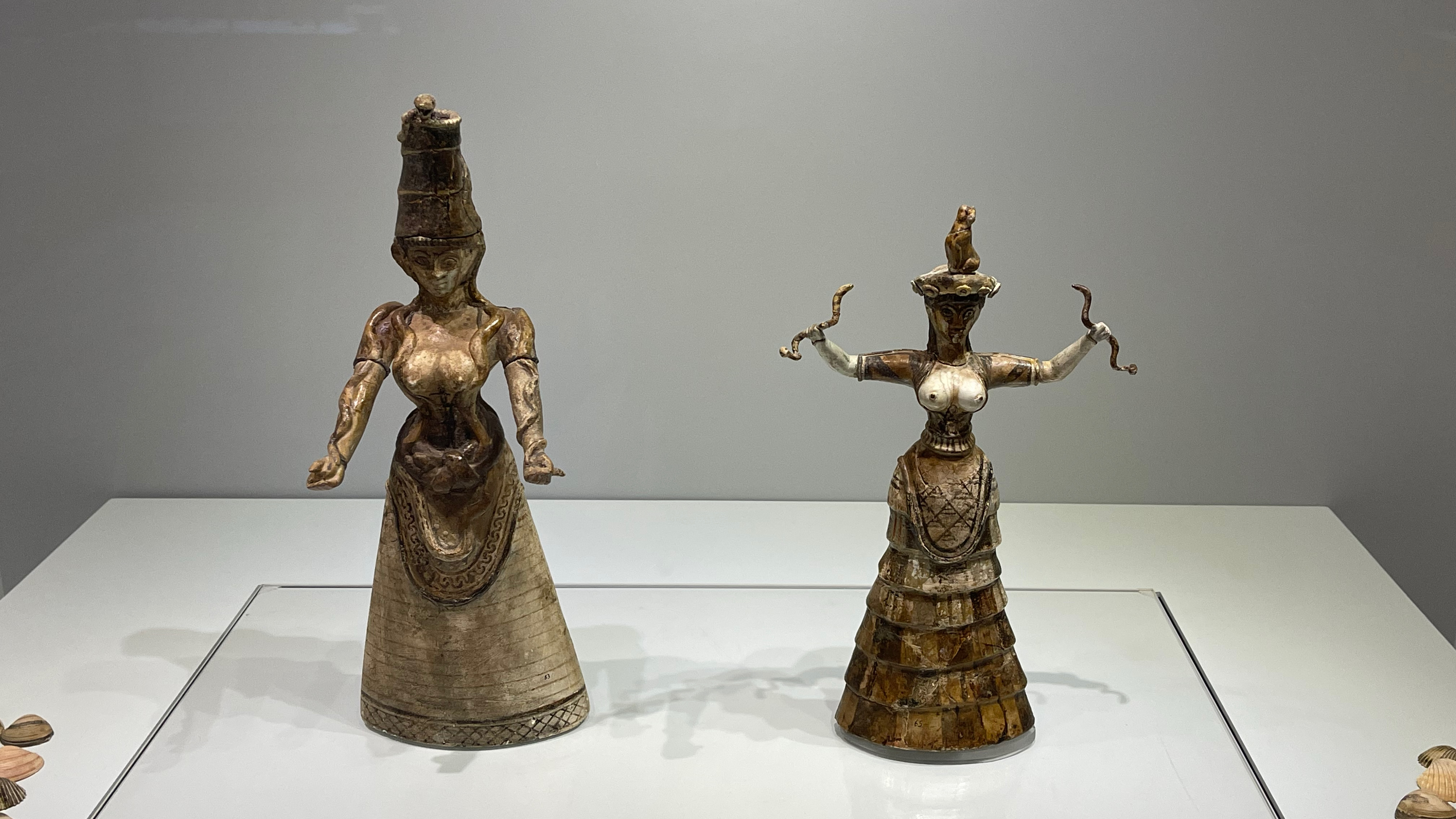
Minoan culture is associated with bulls since Bronze Age. Bulls and symbols like bull horns can be found everywhere all over Crete and the Minotaur, half human, half bull became a household name since Renaissance times in Euorpe. With bull leaping, the Minoans practiced a sport that may have been similar to Spanish bullfighting. So it's no wonder, that depictions of bulls became a favorite design for household items, like the rython (drinking vessel) found in Knossos.
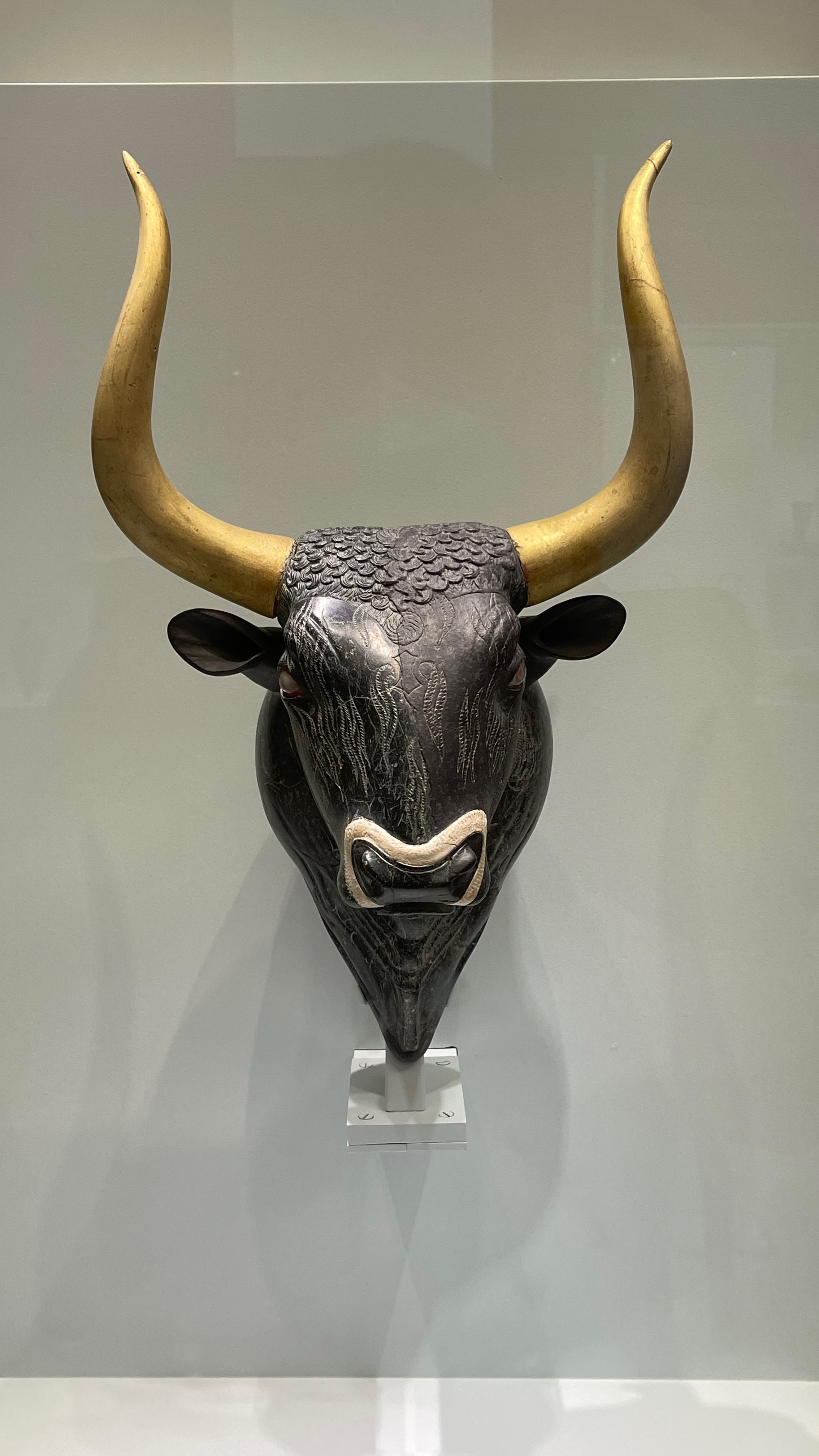
The Malia Pendant shows how sophisticated Minoan craftsmen were. It displays bees or wasps, maybe because honey was - and still is - an important product of Crete. It represents the finest peace of Minoan jewellery and craftsmanship up to this day.
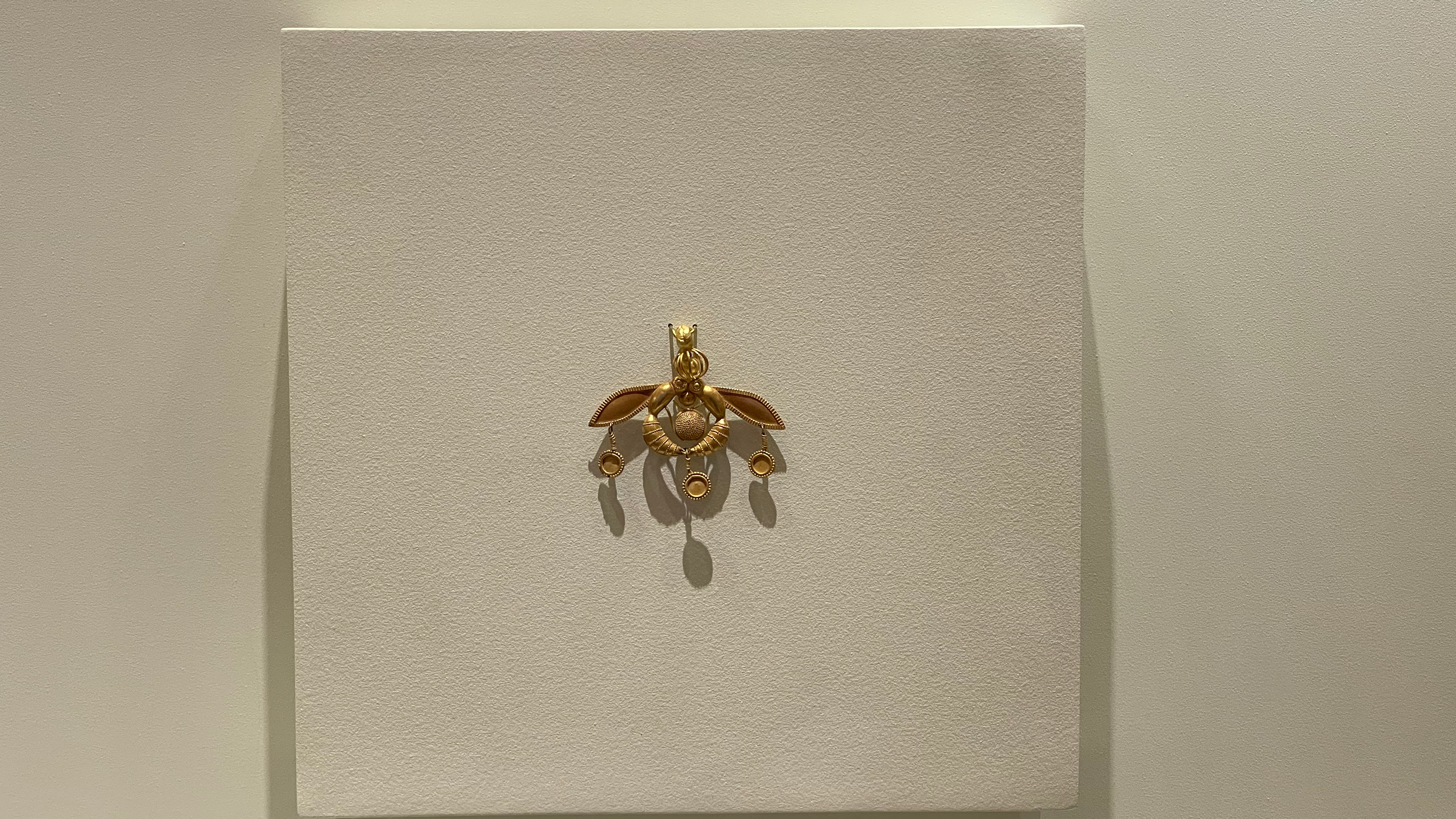
And last but not least, the frescoes from the Palace of Knossows are exhibited at the Archeological Museum of Heraklion. In contrast to the reconstructions of Sir Arthur Evans, the partly-restored frescoes are true to their original.
